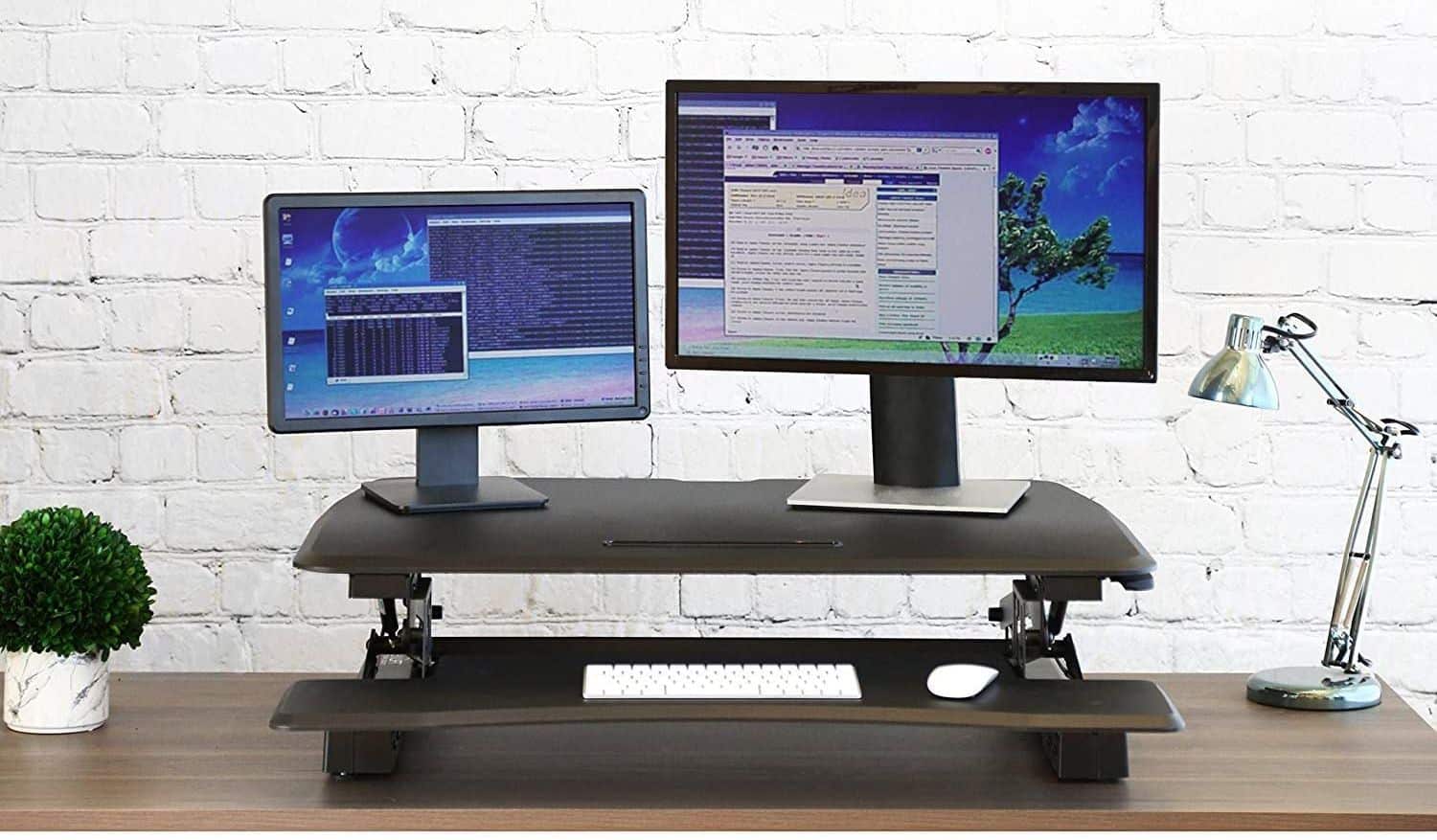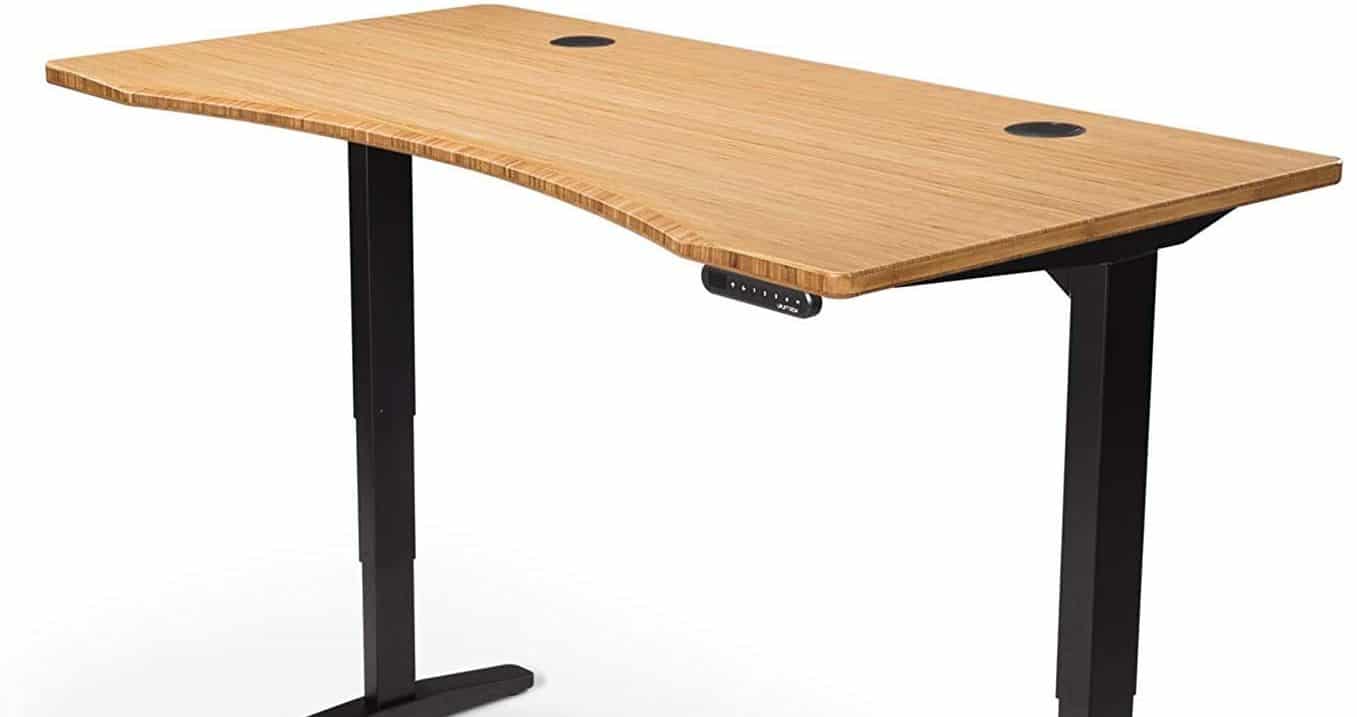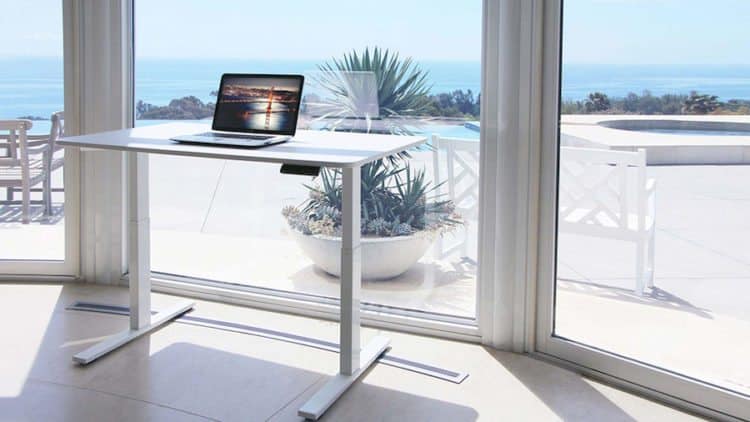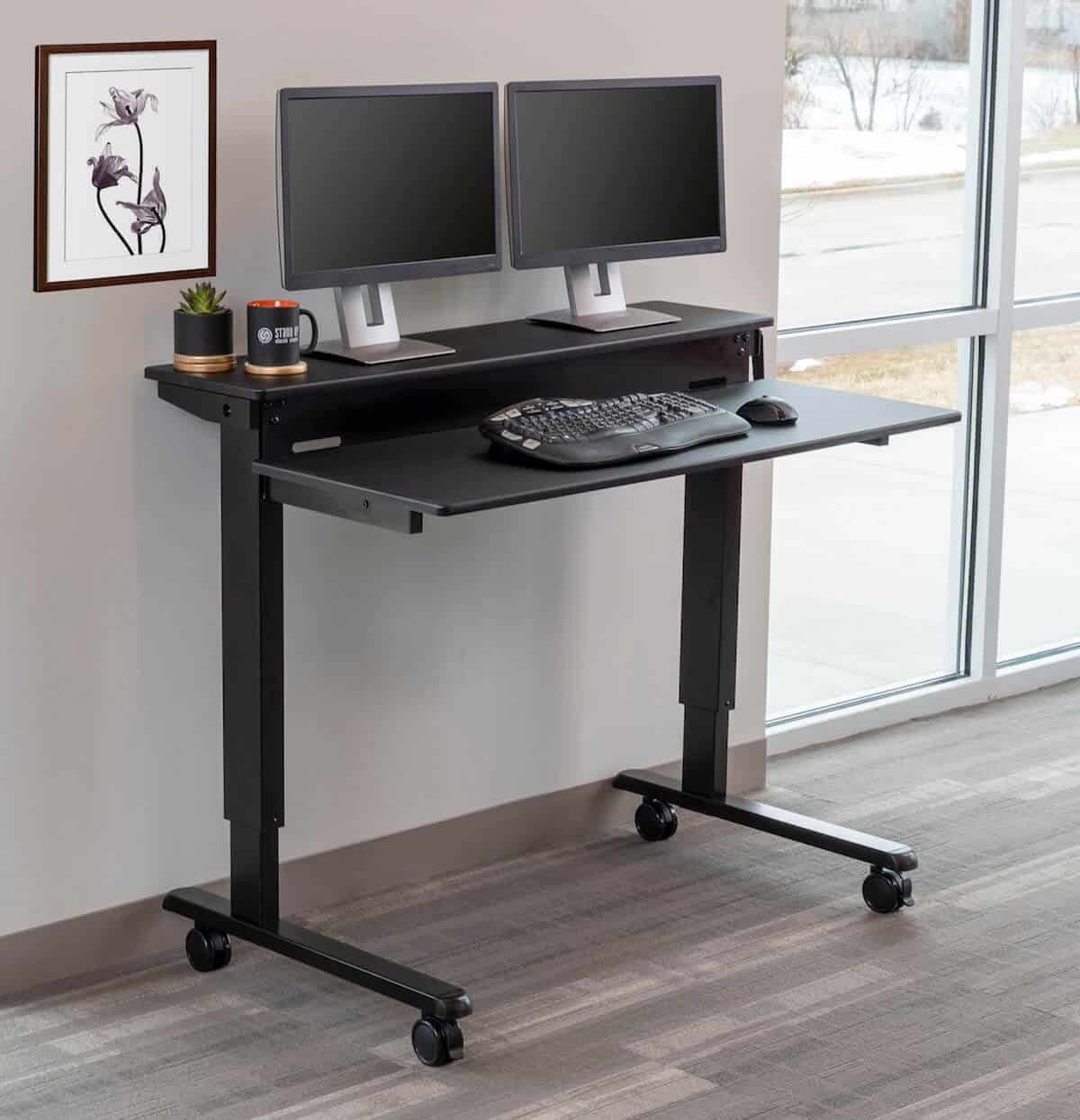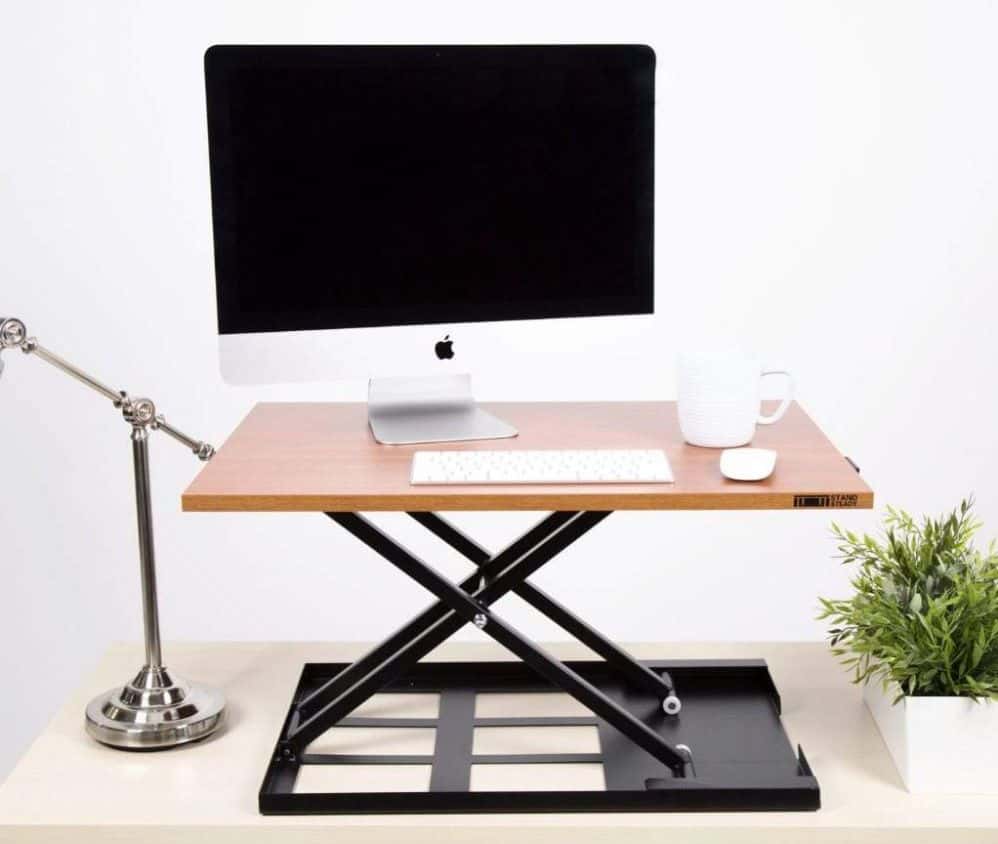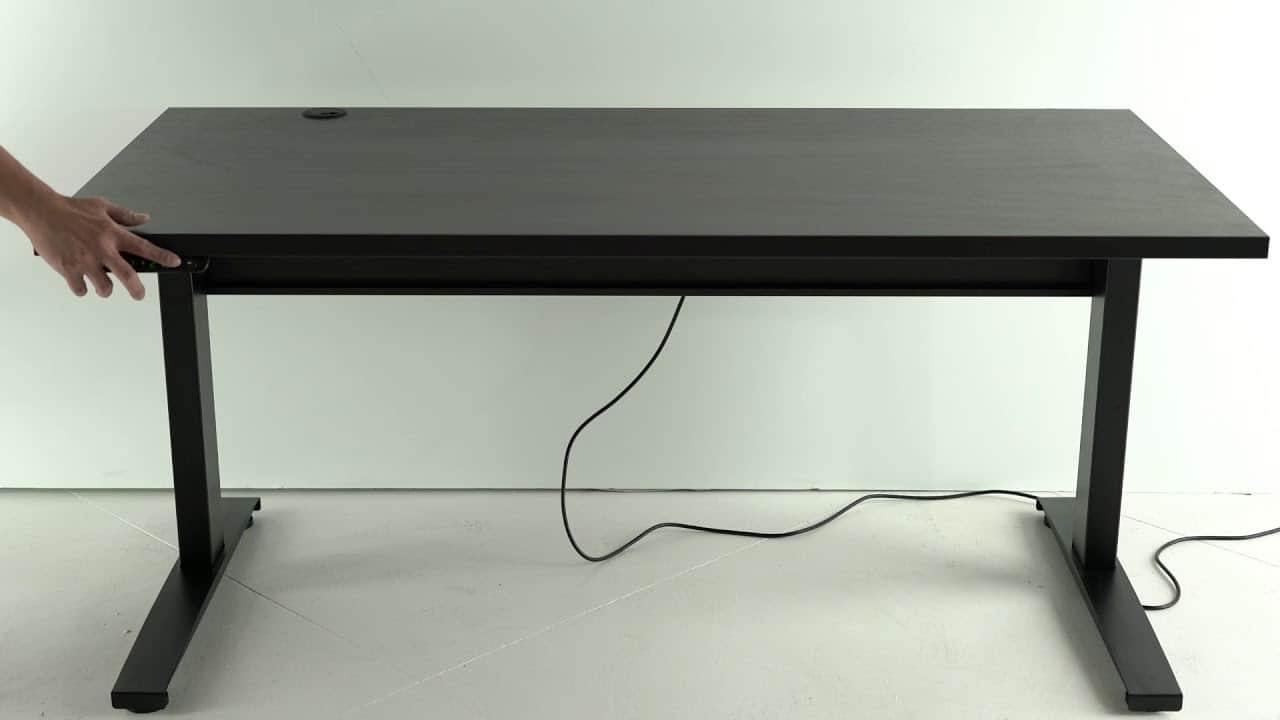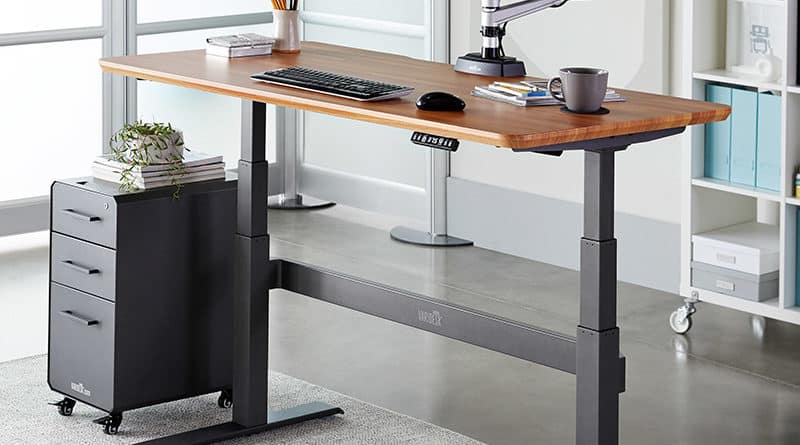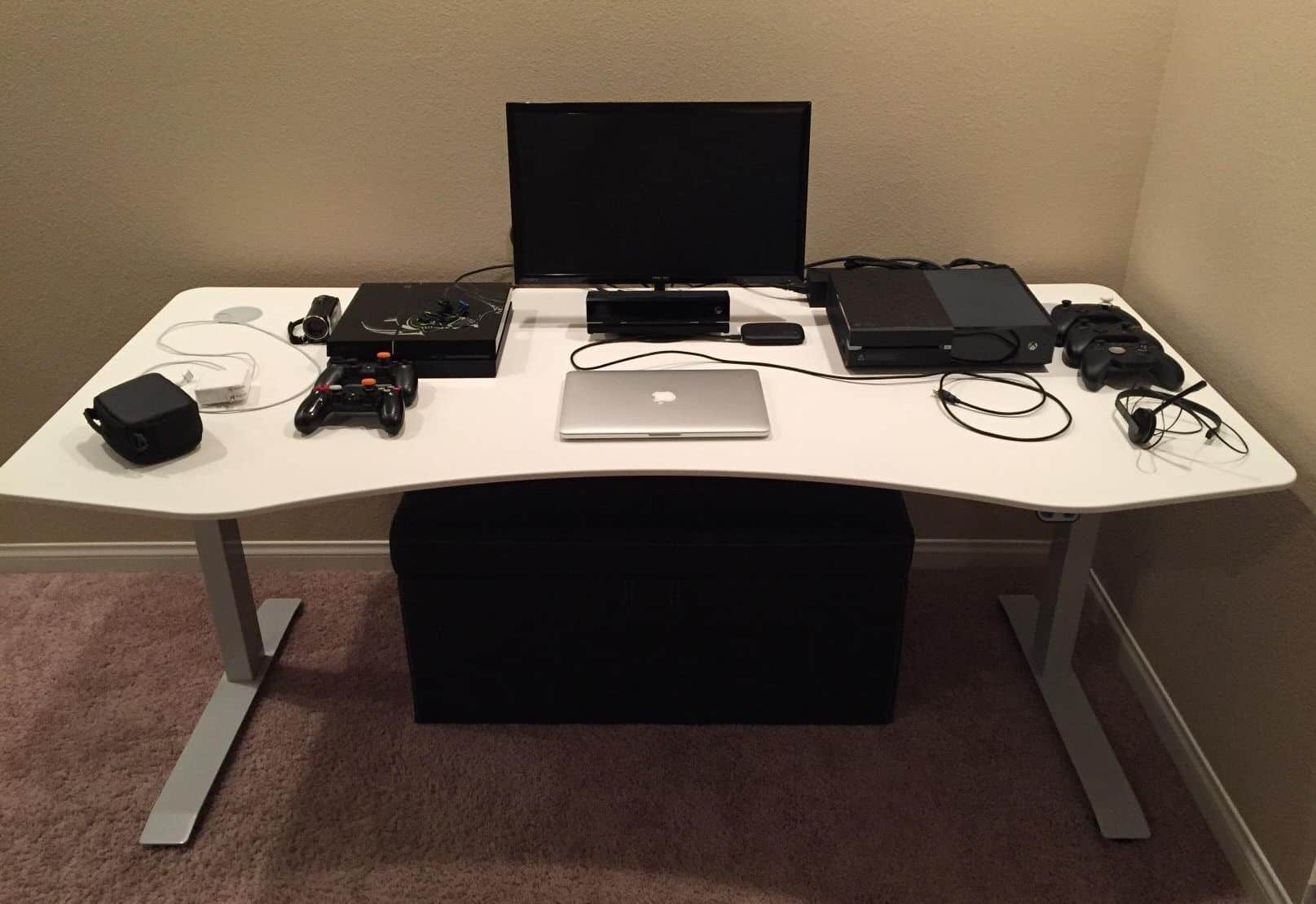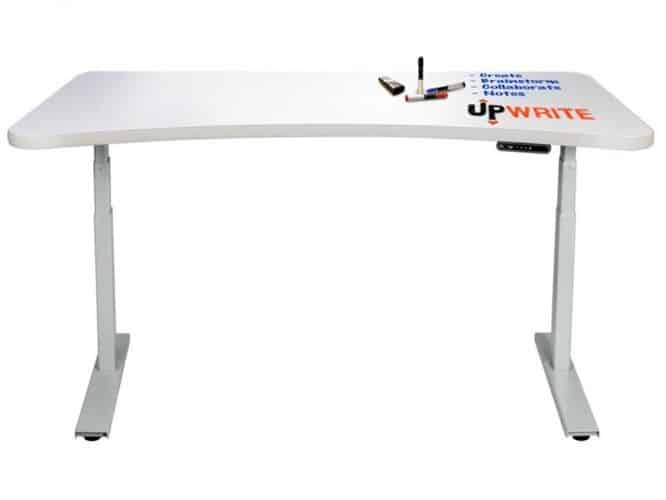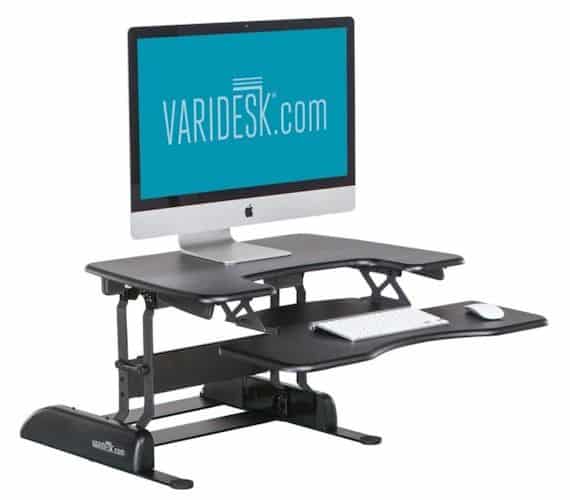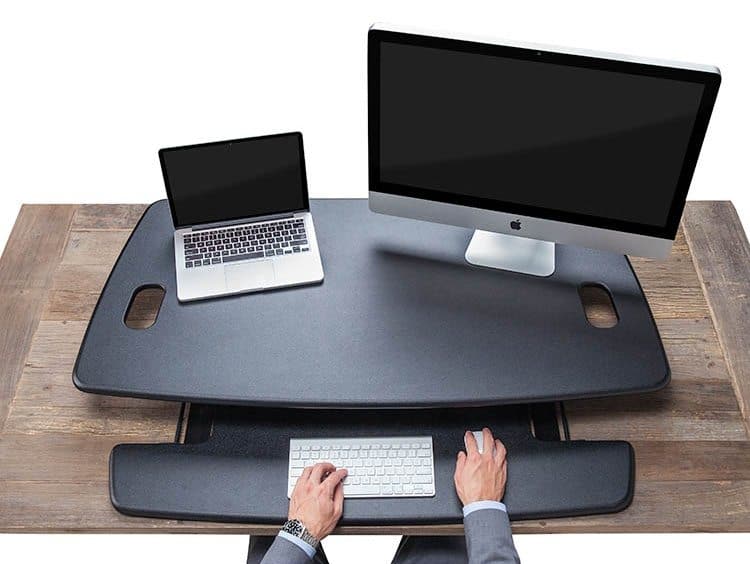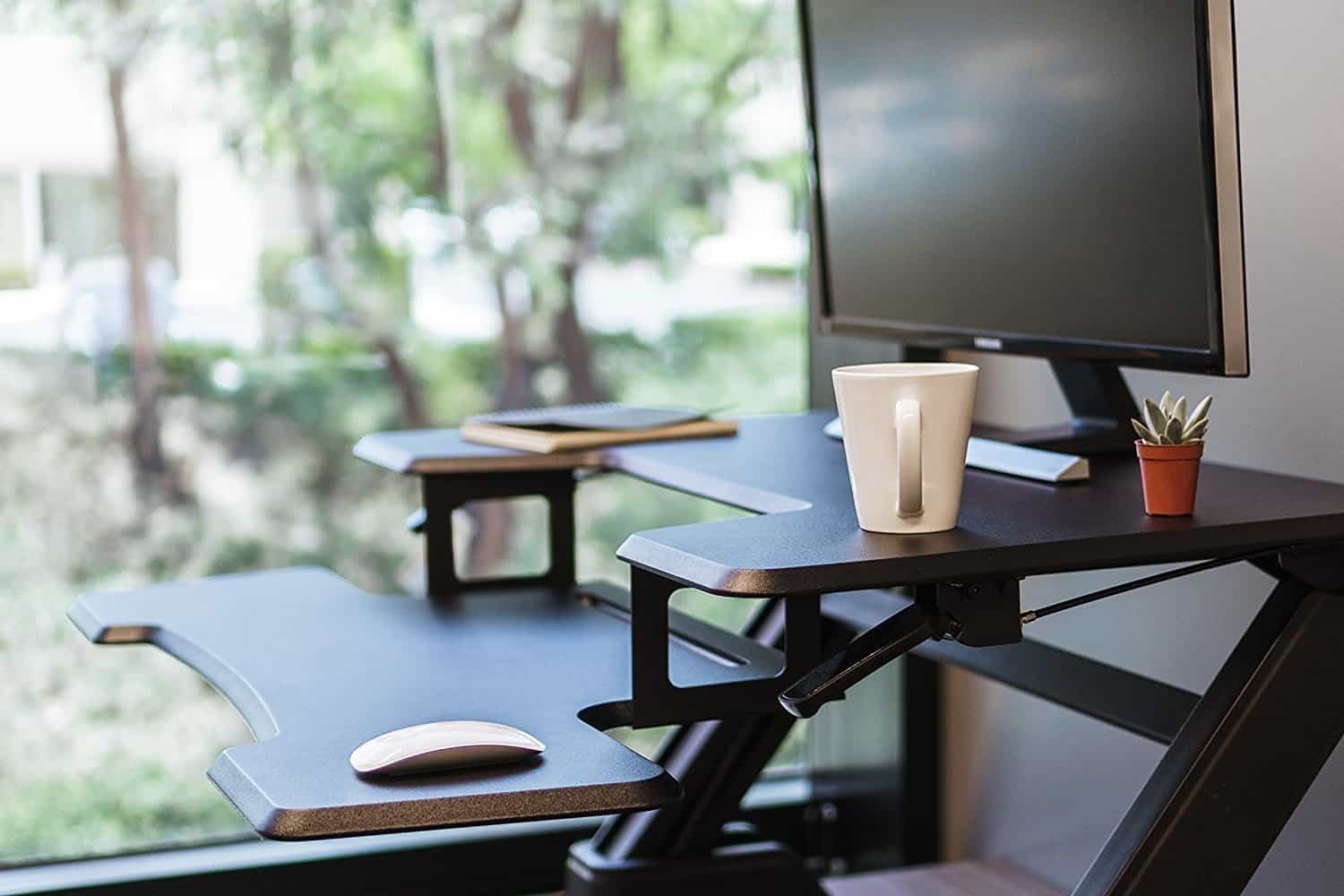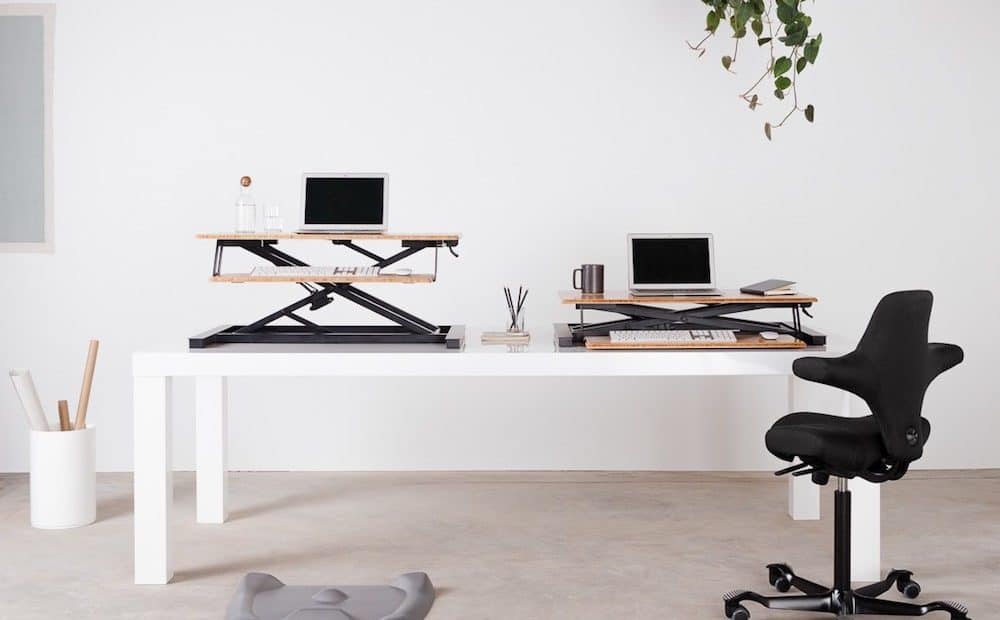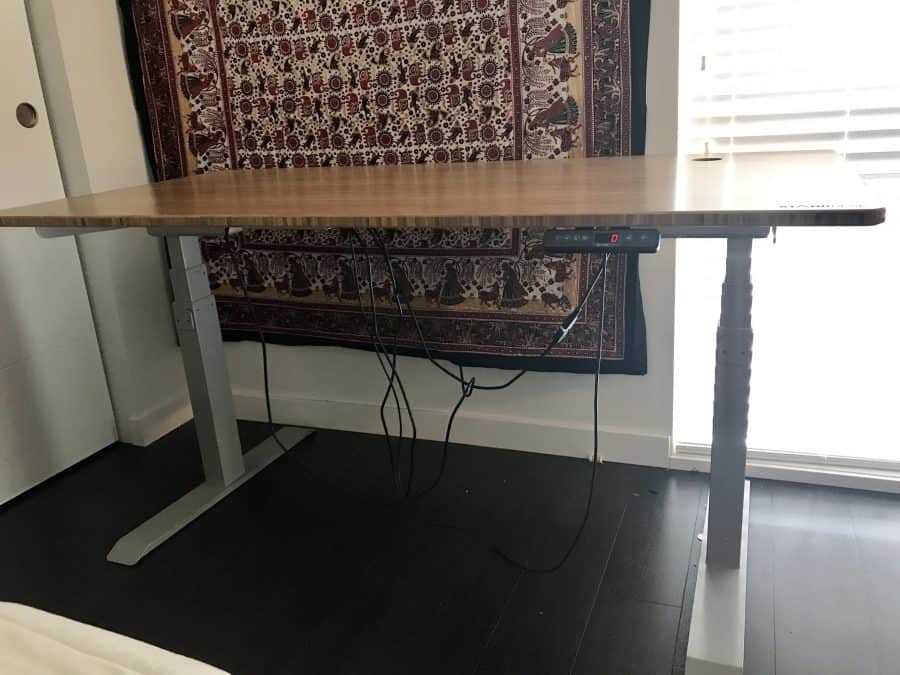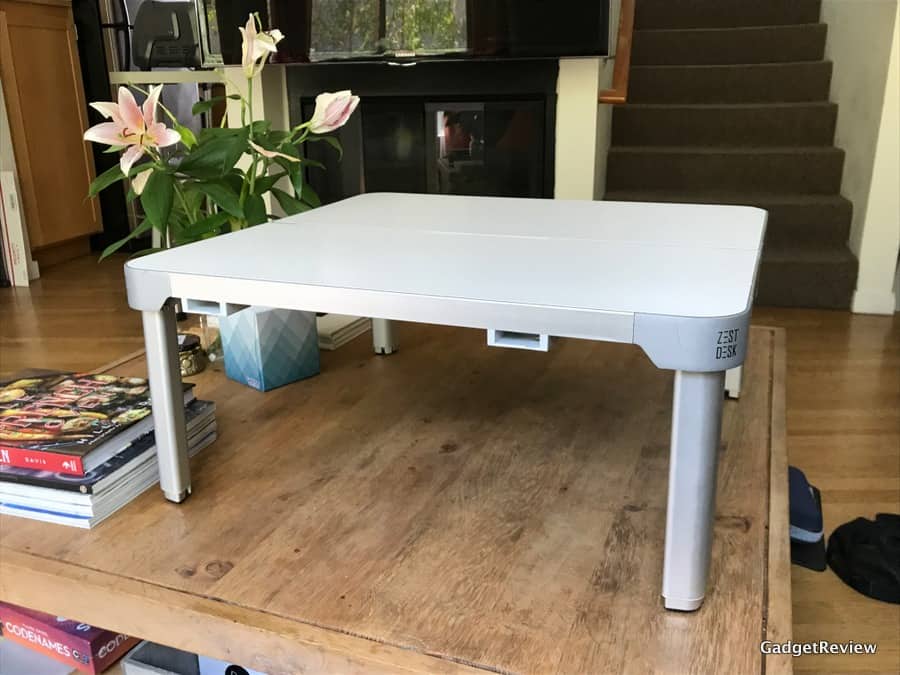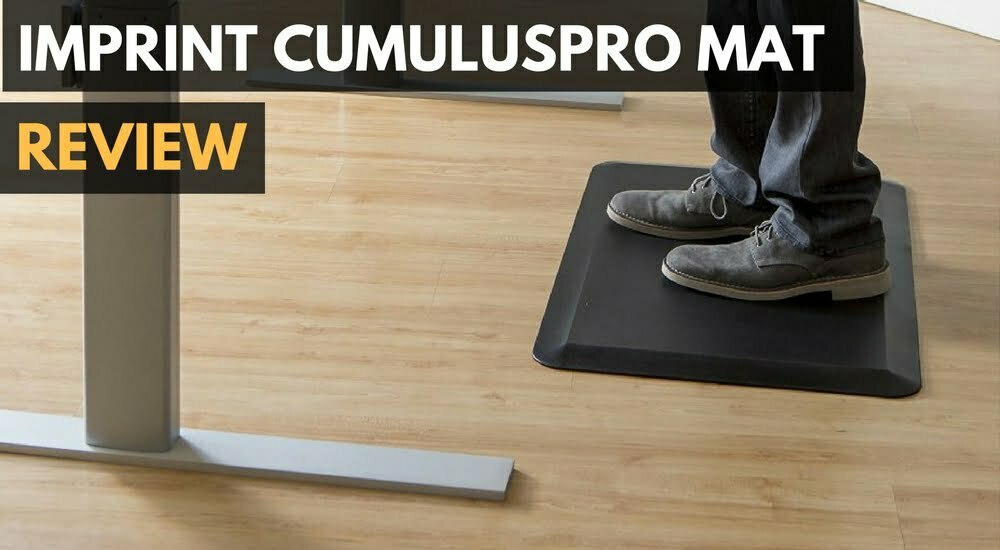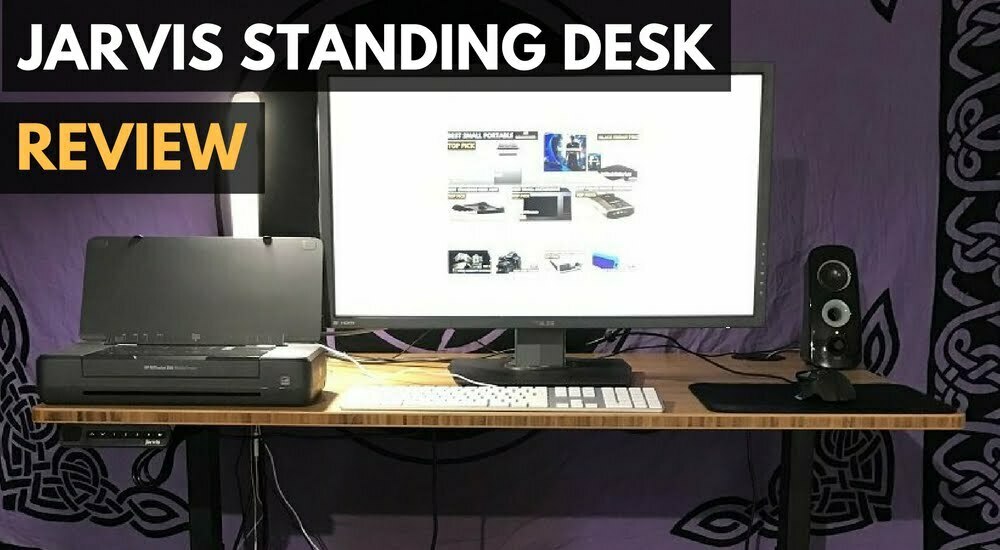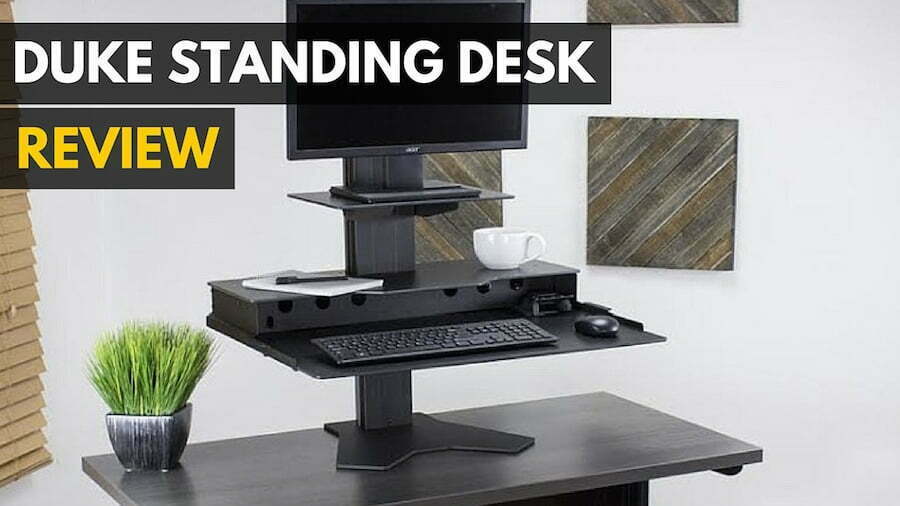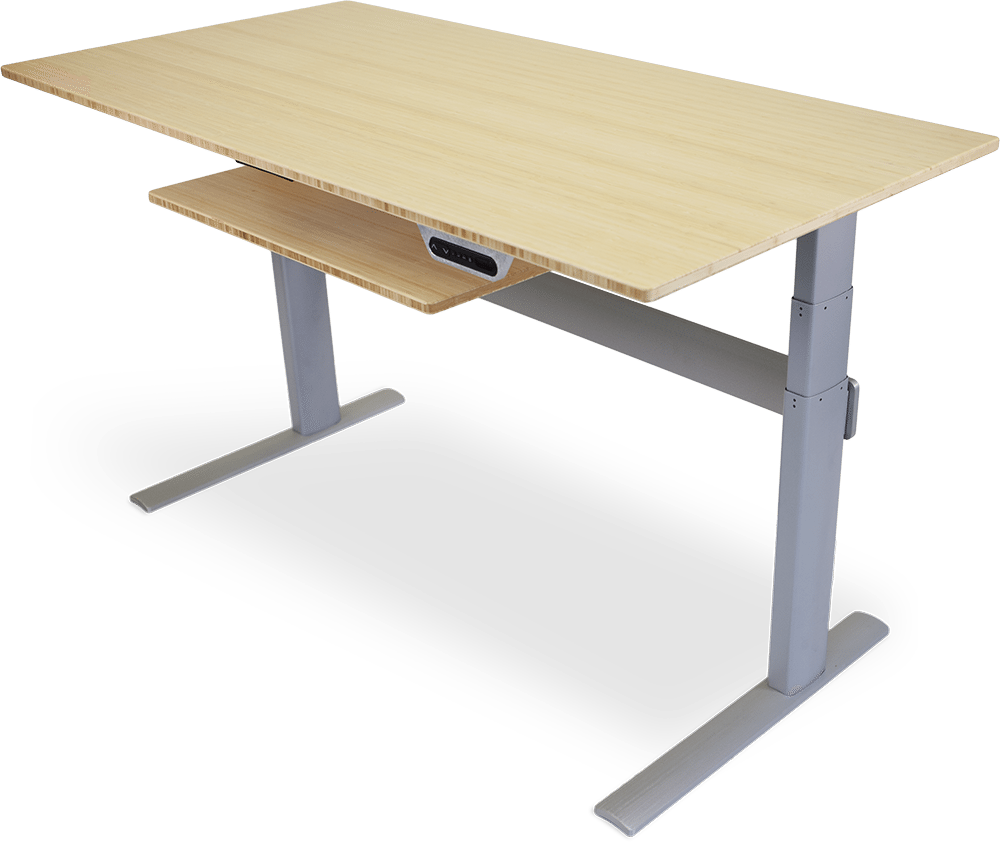There’s been a lot of debate recently about the pros and cons of standing desks, and you may be wondering, “when are standing desks better?” The best standing desks offer various health benefits. These benefits outweigh the risks for many people, but you may want to avoid a sit-stand desk or standing desk if you have trouble with positional changes or circulation.
KEY TAKEAWAYS:
- Workers who work in a field that involves long-term standing may benefit from the ability to adjust the height of their workstations to sit when they can.
- A sit-to-stand desk helps reduce the traditional sedentary lifestyle of office workers while making the workspace ergonomic.
- If you suffer from back pain, neck pain, or shoulder pain, you may notice a decrease in these aches and pains by standing more often.
From burning slightly more calories to relieving the strain on your back, standing during part of your day helps reduce the sedentary lifestyle experienced by office works. If you want to know some of the negatives of standing desks and possible solutions to these problems, check out our article on why a standing desk is bad.
Why a Standing Desk is Good
Adjustable height standing desks have received criticism recently for causing lower leg and foot pain and swelling associated with blood pooling. Additionally, these tables may cause an increase in varicose veins after long-term, all-day use.
Insider Tip
Standing desks may help burn additional calories compared to sitting products.
On the other hand, height adjustable electric standing desks cause a slight increase in calories burned while working. In addition, height-adjustable surfaces provide the usefulness of an ergonomic workspace with reduced back pain, neck pain, and shoulder pain, adding to their benefits. If you want to learn more about the different types of standing desks, read what is a standing desk’s wood.
Position Changes
If you stand all day in retail or a similar role, you may benefit from using a standing desk frame and desktop, reducing the risk of certain cardiovascular diseases and health issues. However, these roles make you more prone to varicose veins in the future because of the increased pressure on your lower limb cardiovascular system.
As blood pools in the legs, it puts stress on your veins and vessels. If you work in a mostly standing role, you likely have a standard laminate desktop at your standing height. However, you could potentially take advantage of any chance to sit while working with an adjustable height electric desk or a manual standing desk.
Calories and Muscles
Research has shown that standing desktops can increase the number of calories burned during the day compared to sitting. Although the increase in calories remains less than initially expected, you still burn about eight calories more per hour than you would while sitting. Therefore, if you want to lose weight or become more active, you want to burn as many calories as possible.
Additionally, you work more muscles within your frame as you stand compared to sitting positions. Many offices feature chairs that support your back and frame, which can be a good thing. However, this component means you use fewer muscles in the supported areas. Electric desktops may also improve mental health and reduce cardiovascular disease, though these desktops and each frame come with high prices.
Ergonomic Benefits
When you optimize your workspace for ergonomics, you open yourself up to more natural ways of moving. Your office may feature an ergonomic chair, mouse, or keyboard already, but you likely could improve the ergonomics further using a standing desktop. These desks also help to discourage poor posture associated with traditional desk frame options.
These surfaces provide better positions for typing on a keyboard or keypad while standing and looking at your monitors if set up properly. For example, if you set up your desktop and frame to rest at elbow level, you ensure your elbows bend at 90-degree angles while you type on your keypad. Likewise, your monitor should be set up directly in front of you with the upper edge of the screen at eye level. You may notice that a standing position forces you to adjust your posture, reducing the strain on your neck, shoulders, and lower back.
Warning
If you stand for too long for a consistent period of time, you increase your risk of developing varicose veins.
F.A.Q.S
How to use a sit-stand desk?
Many electric sit-stand desks adjust with the press of a button on their own. However, a manual laminate desktop requires that you use a crank to change the height.
How long should I stand at my standing desk?
You should work to balance your time with a ratio of sitting to standing of 1:1 or 2:1. However, you should slowly work into this rate, keeping your desktops and keypad in a sitting or neutral position.
Is standing for 8 hours bad?
Standing for eight hours is not inherently bad, but it can aggravate poor circulation, cause lower limb pain, and increase the risk of varicose veins. To reduce these risks, you should change positions or move frequently, which treadmill desks can help with for short periods of time.
STAT: Still, 13 pounds is 13 pounds, and the benefits described don’t account for incrementally-improved metabolic rate (every percent counts), along with all the other incremental benefits each micro-improvement makes. (source)
REFERENCES:
- https://health.clevelandclinic.org/will-standing-work-improve-health/
- https://www.health.harvard.edu/blog/the-truth-behind-standing-desks-2016092310264
- https://www.upliftdesk.com/benefits-of-a-standing-desk/r
- https://www.uclahealth.org/safety/sitting-to-standing-workstations
- https://yaasa.com/health-benefits-of-a-standing-desk/

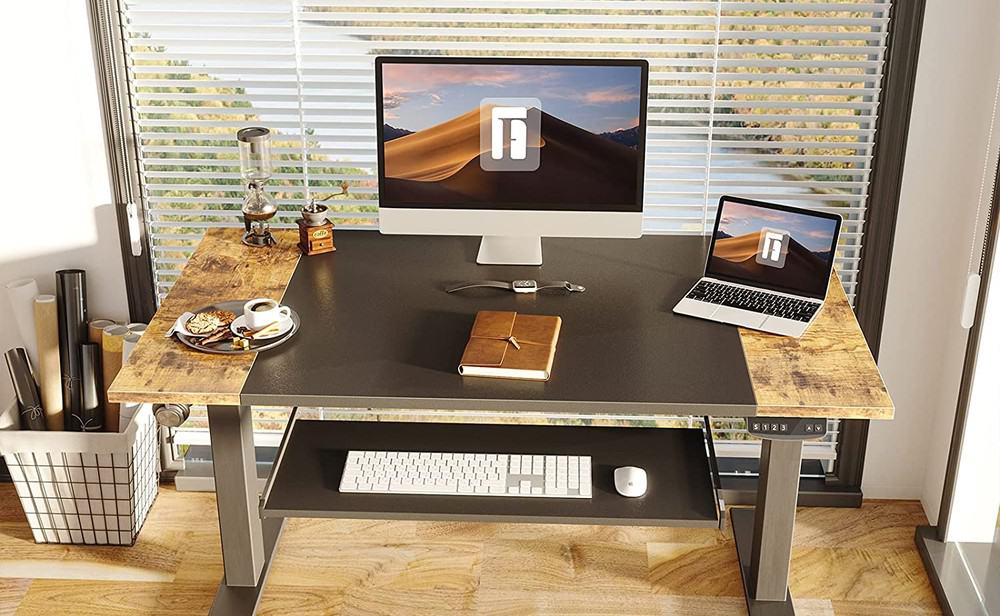













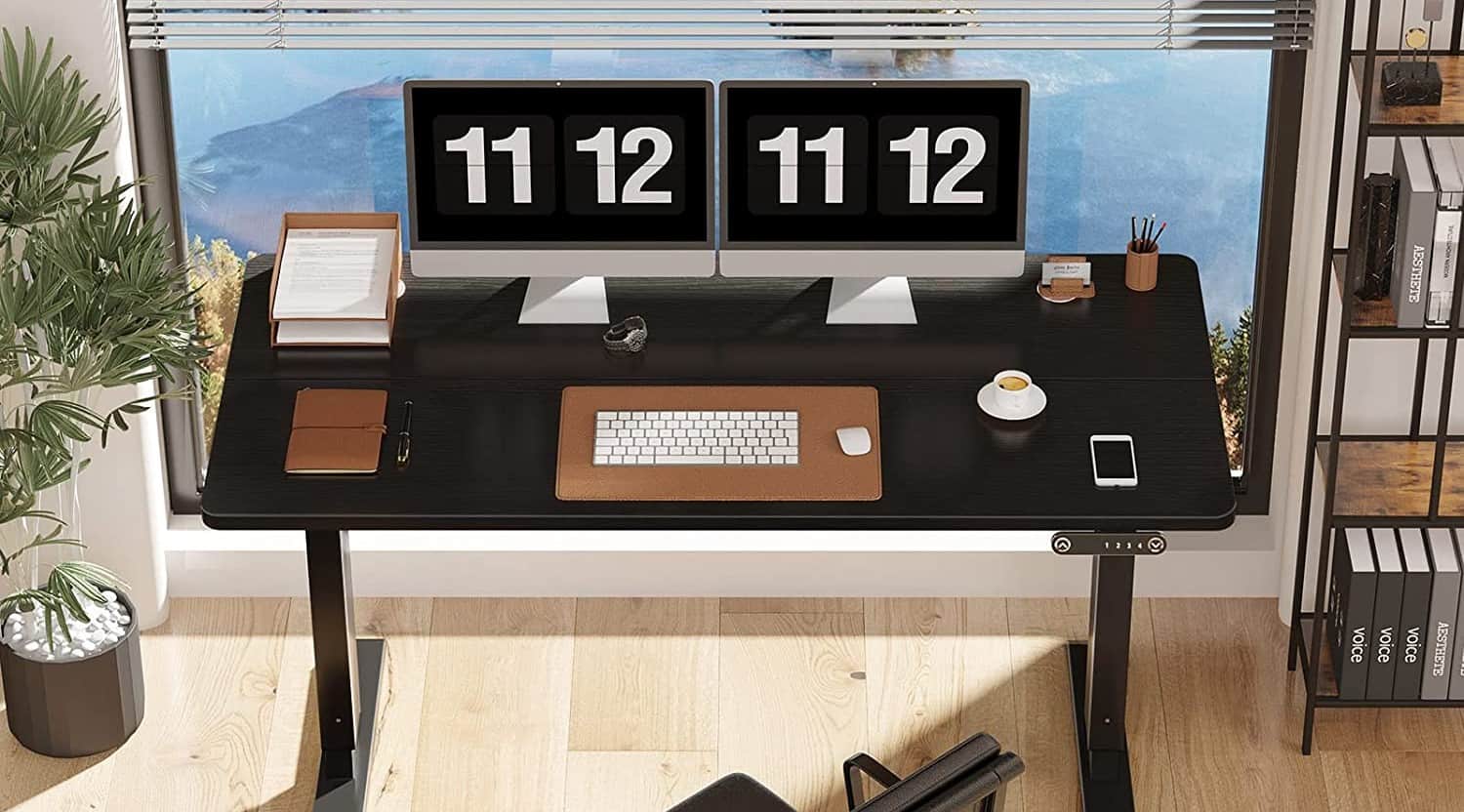
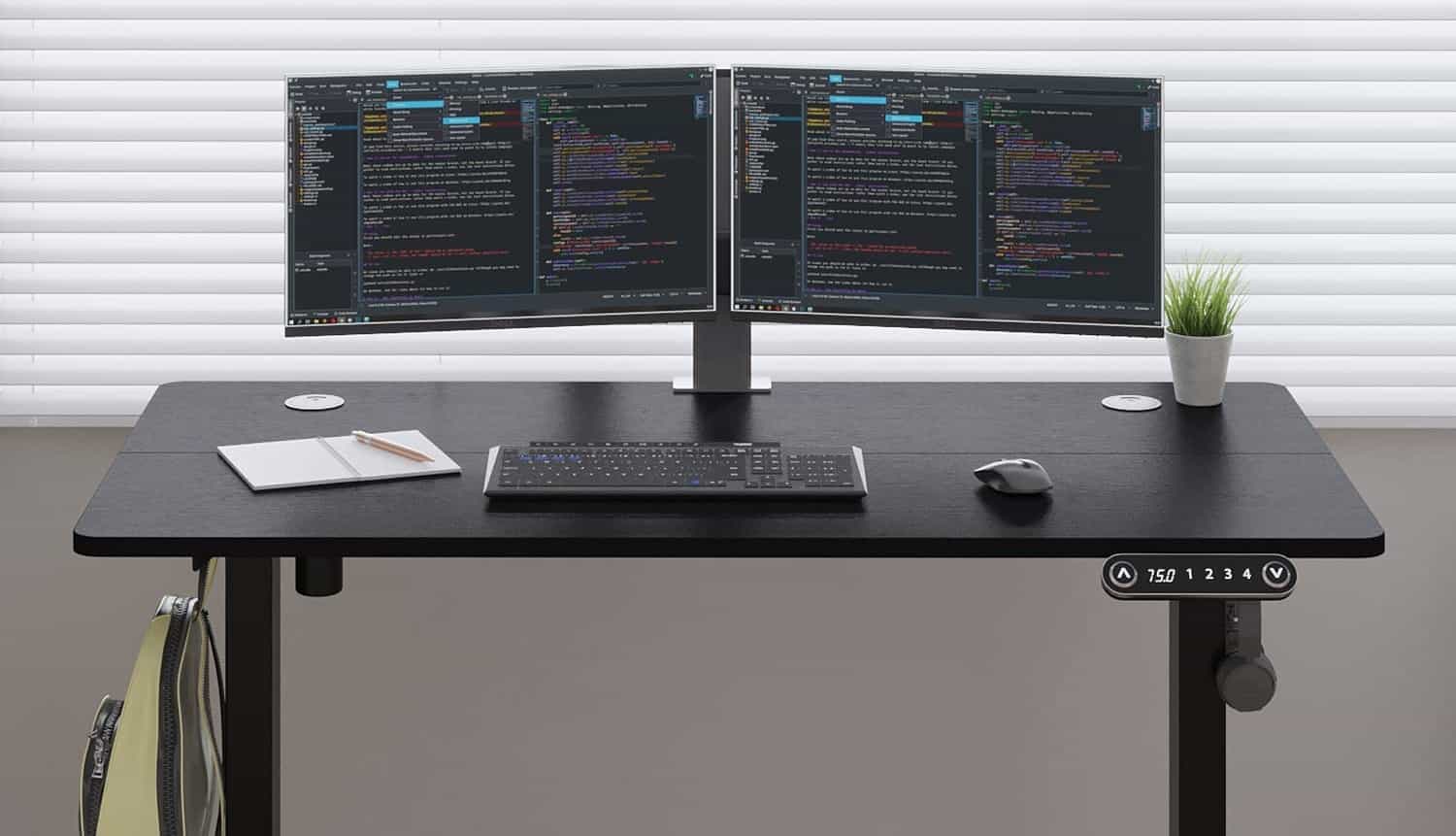
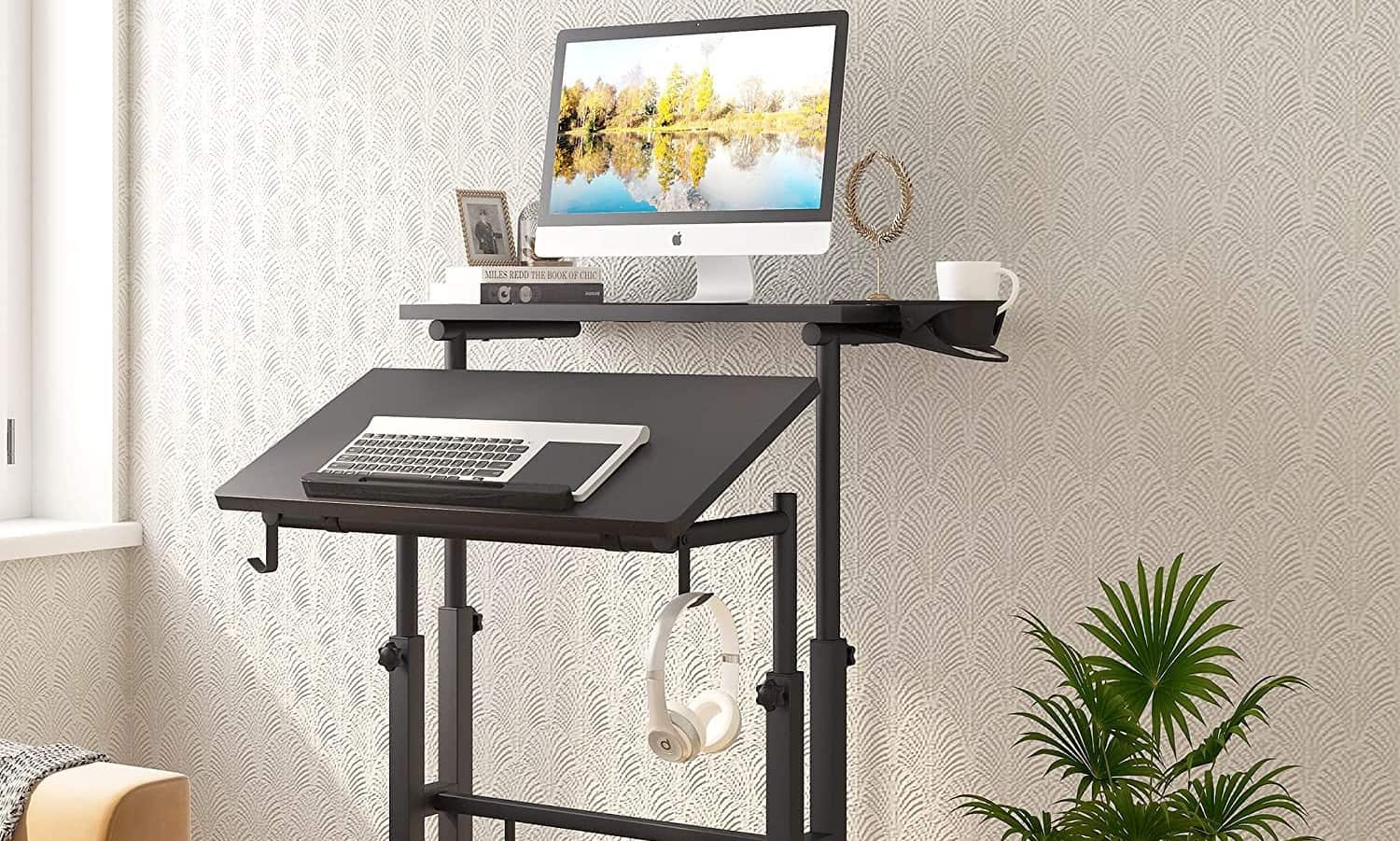
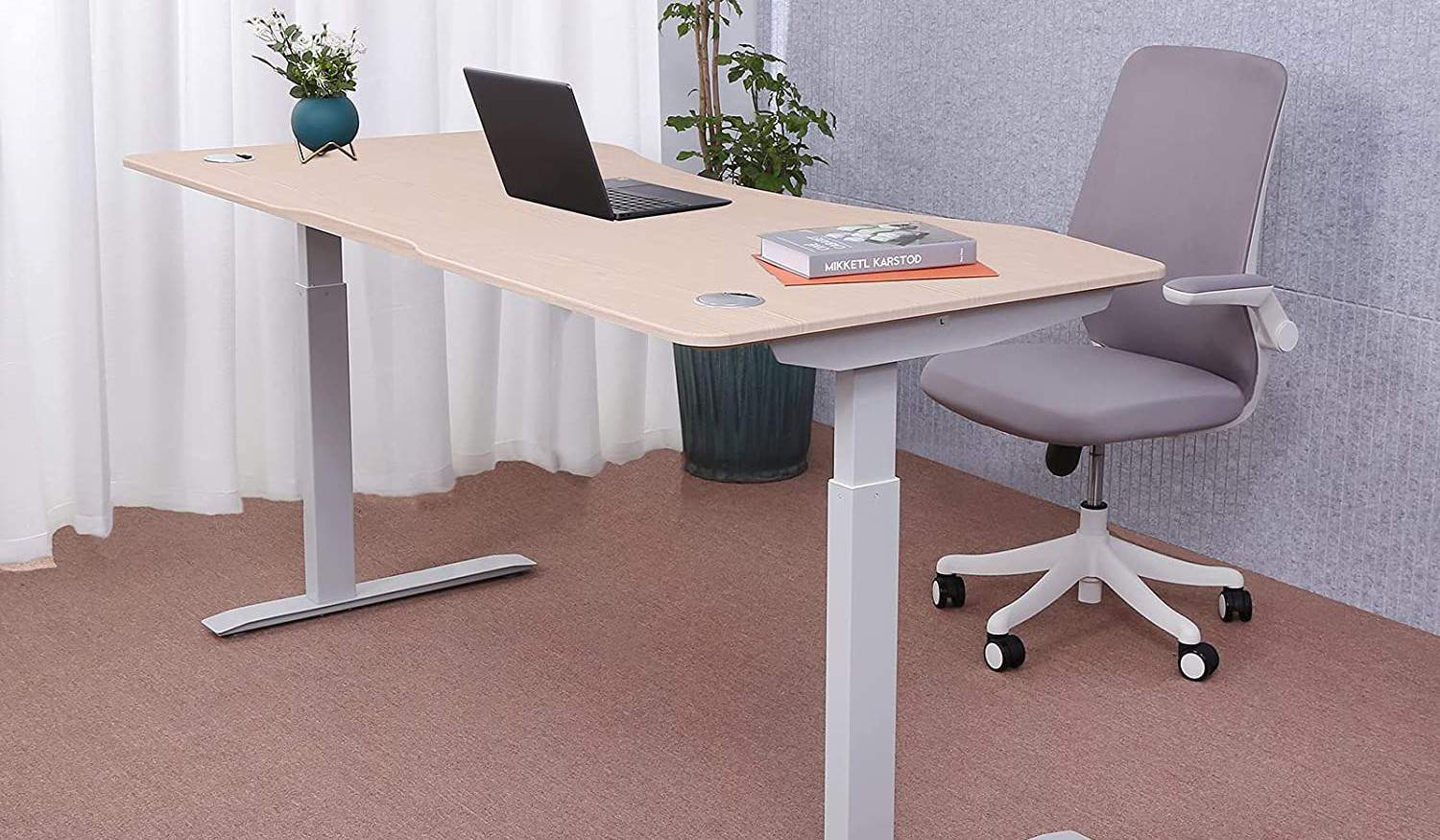
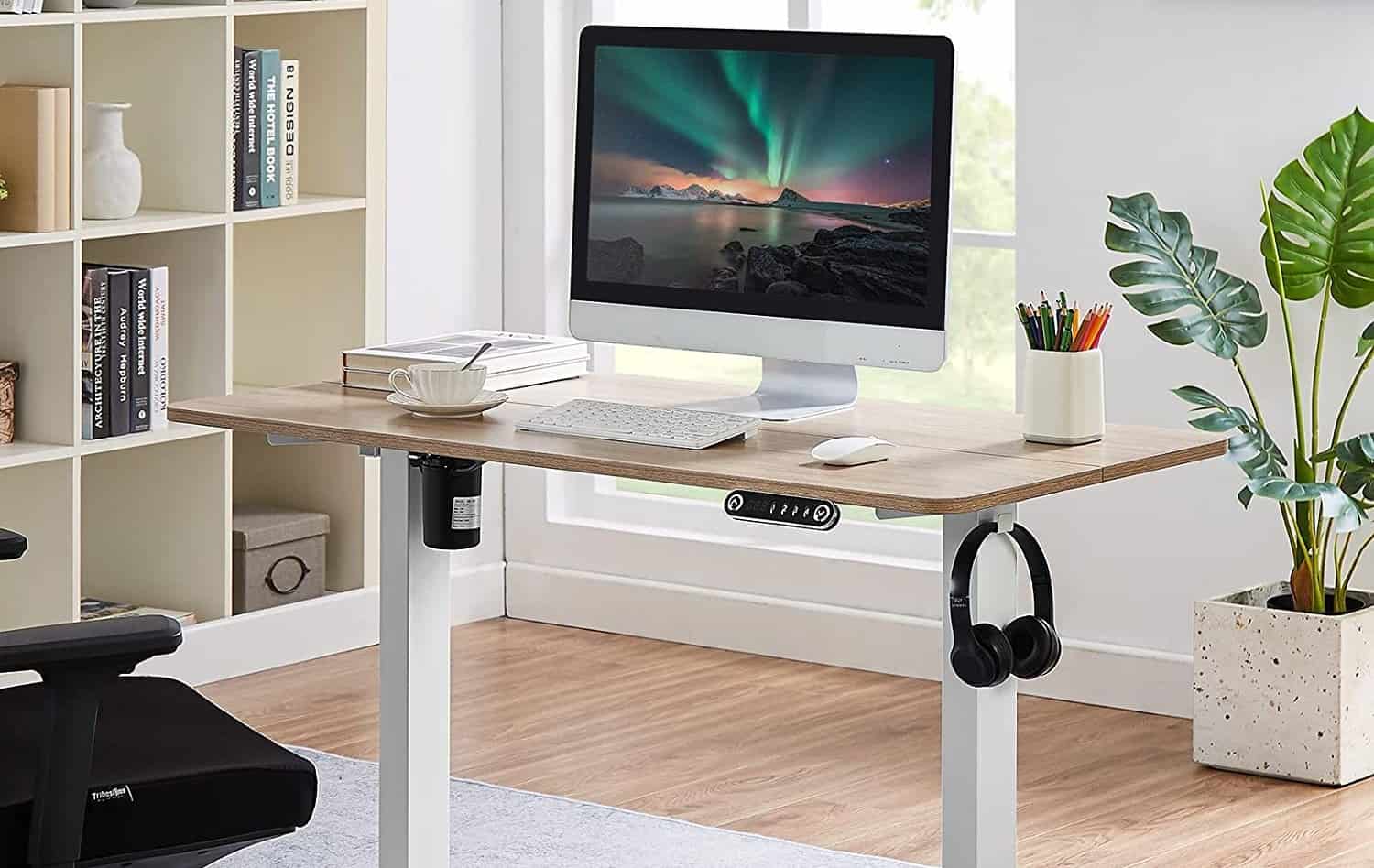
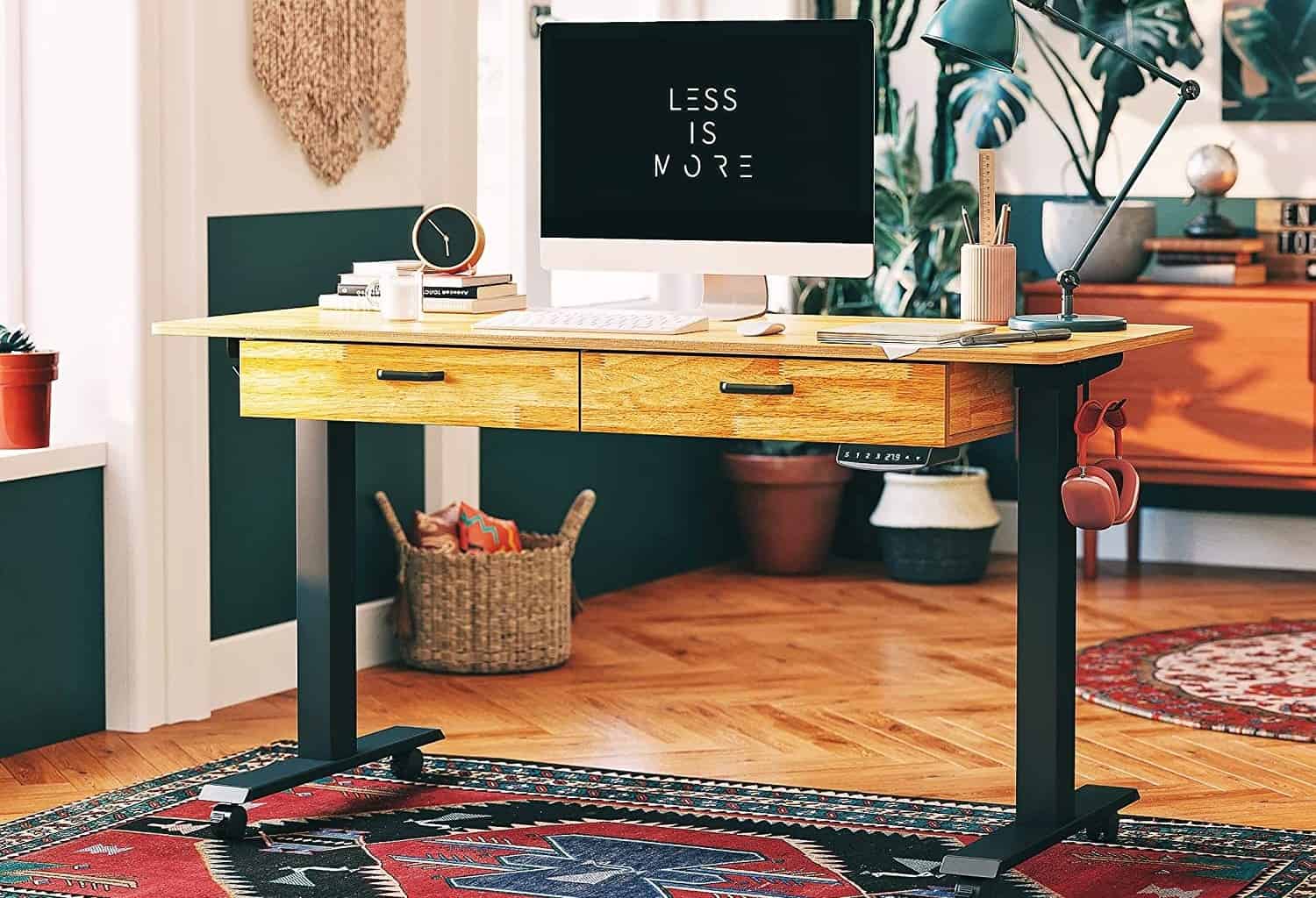
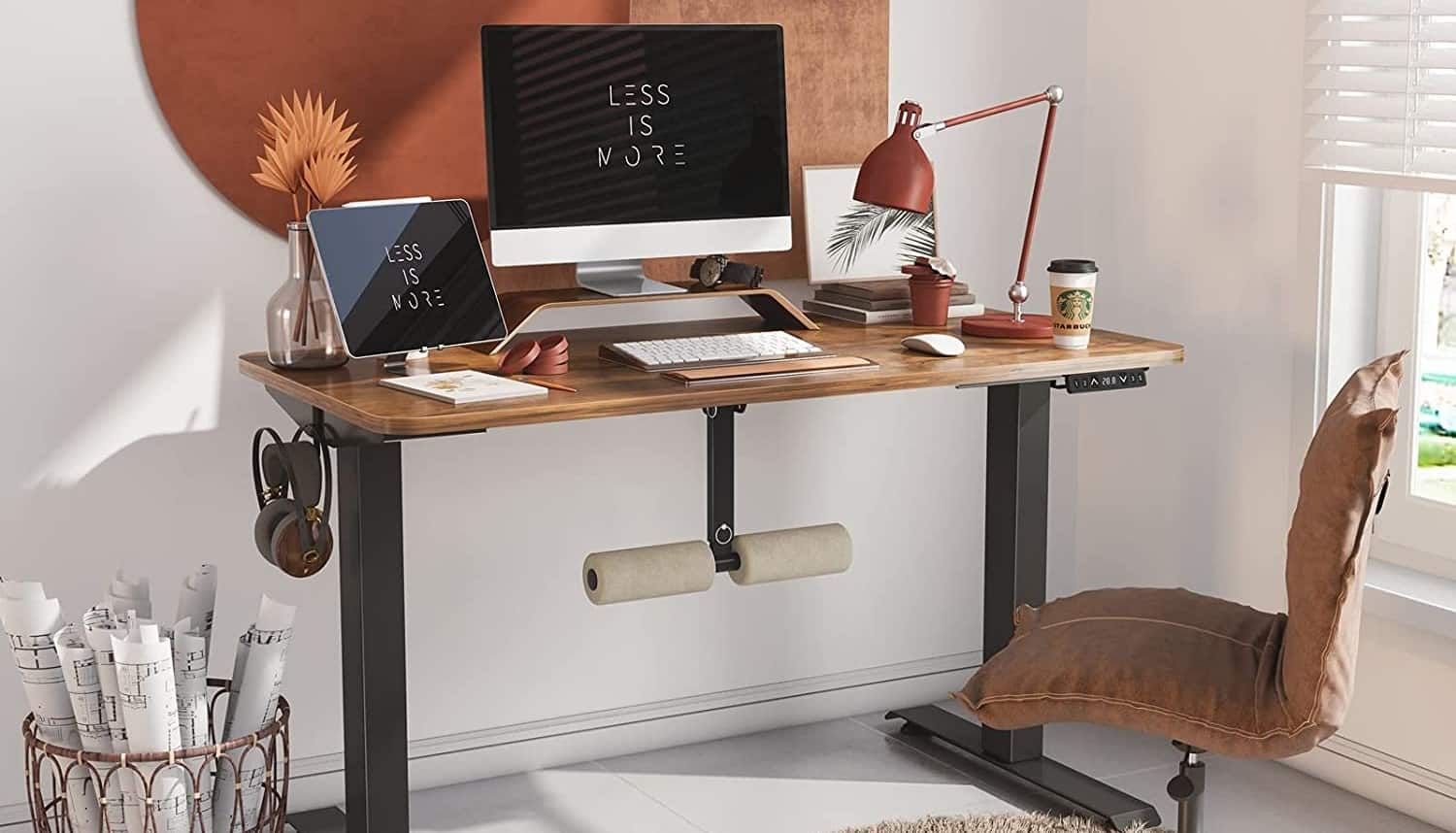
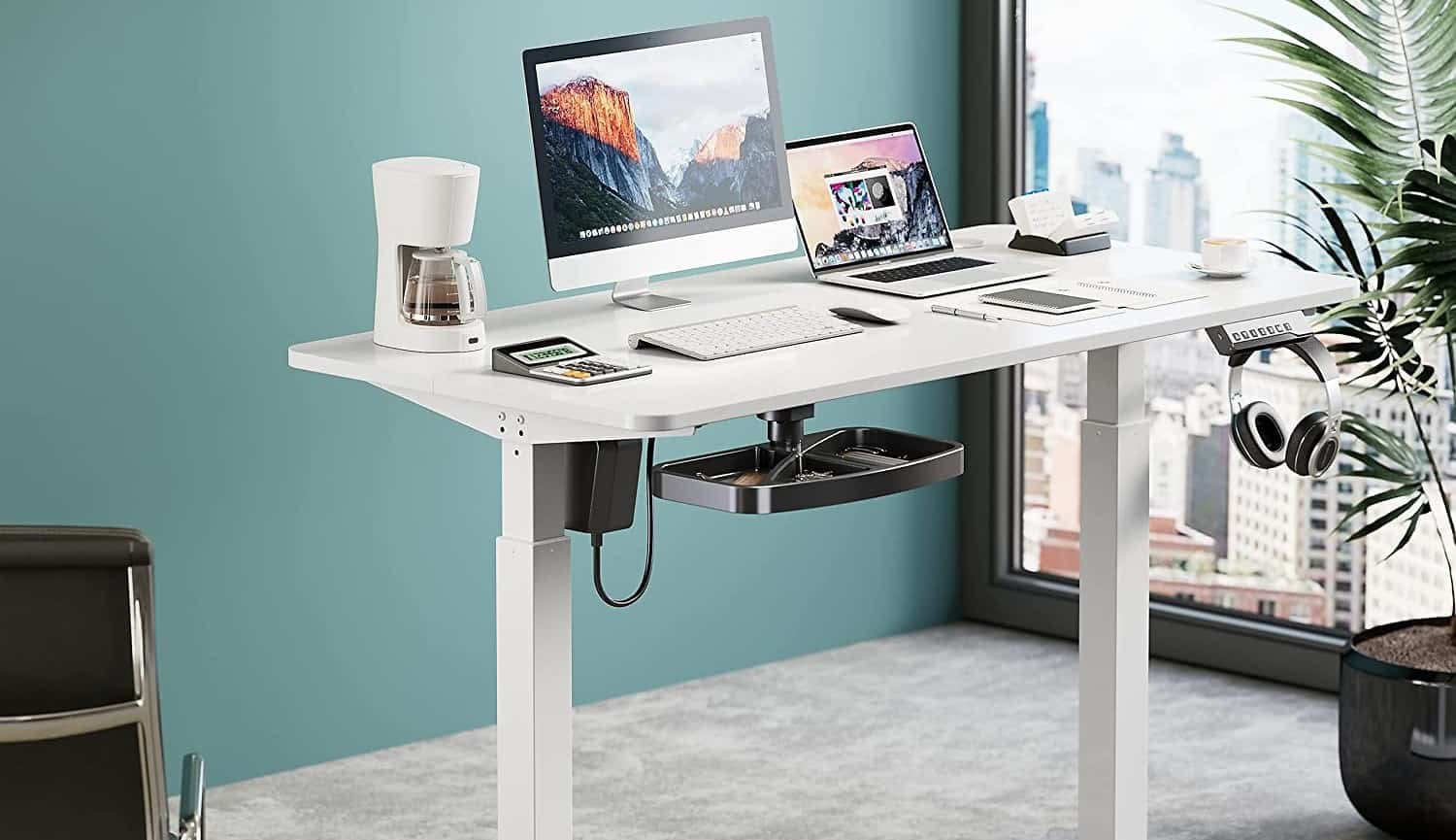
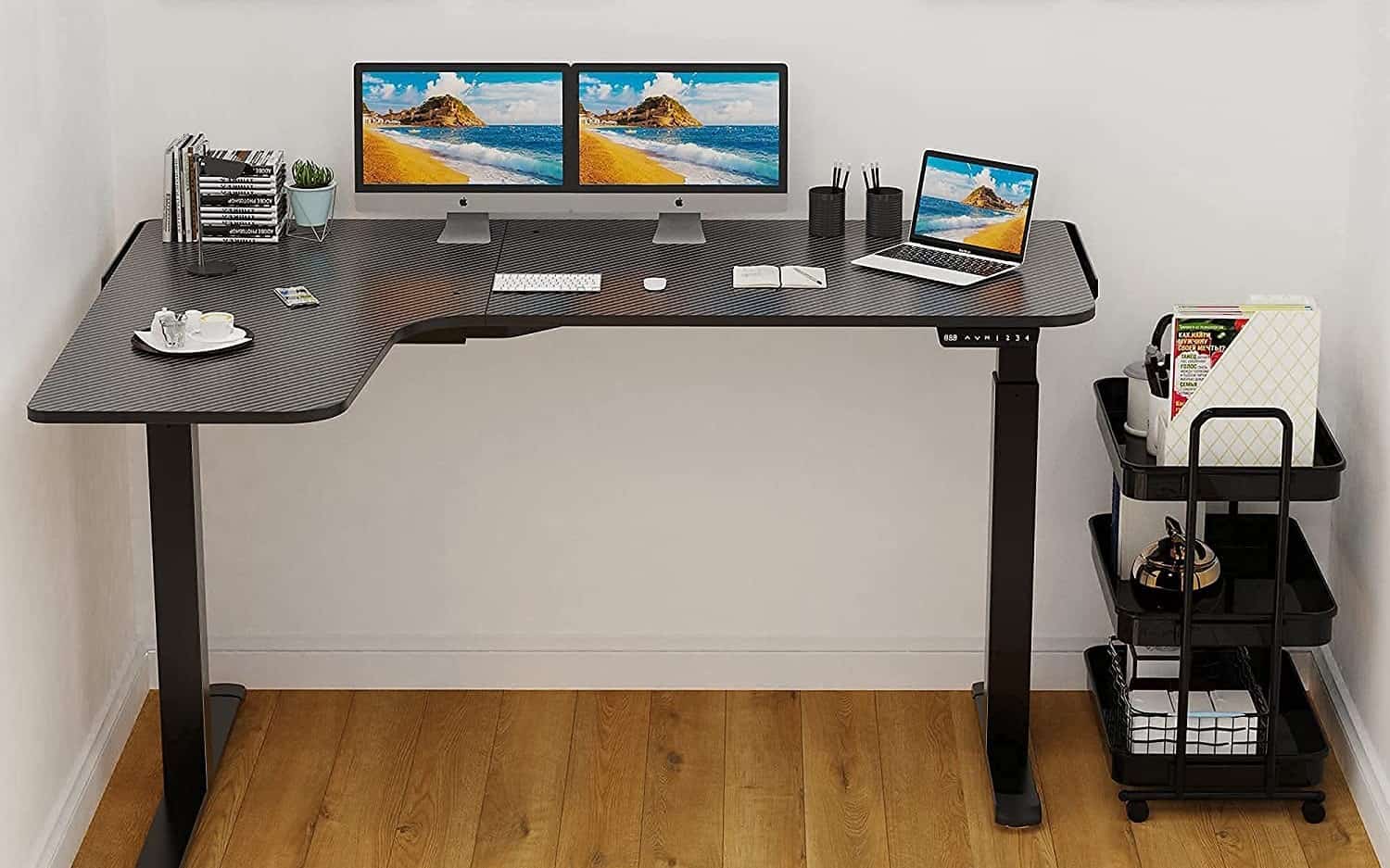

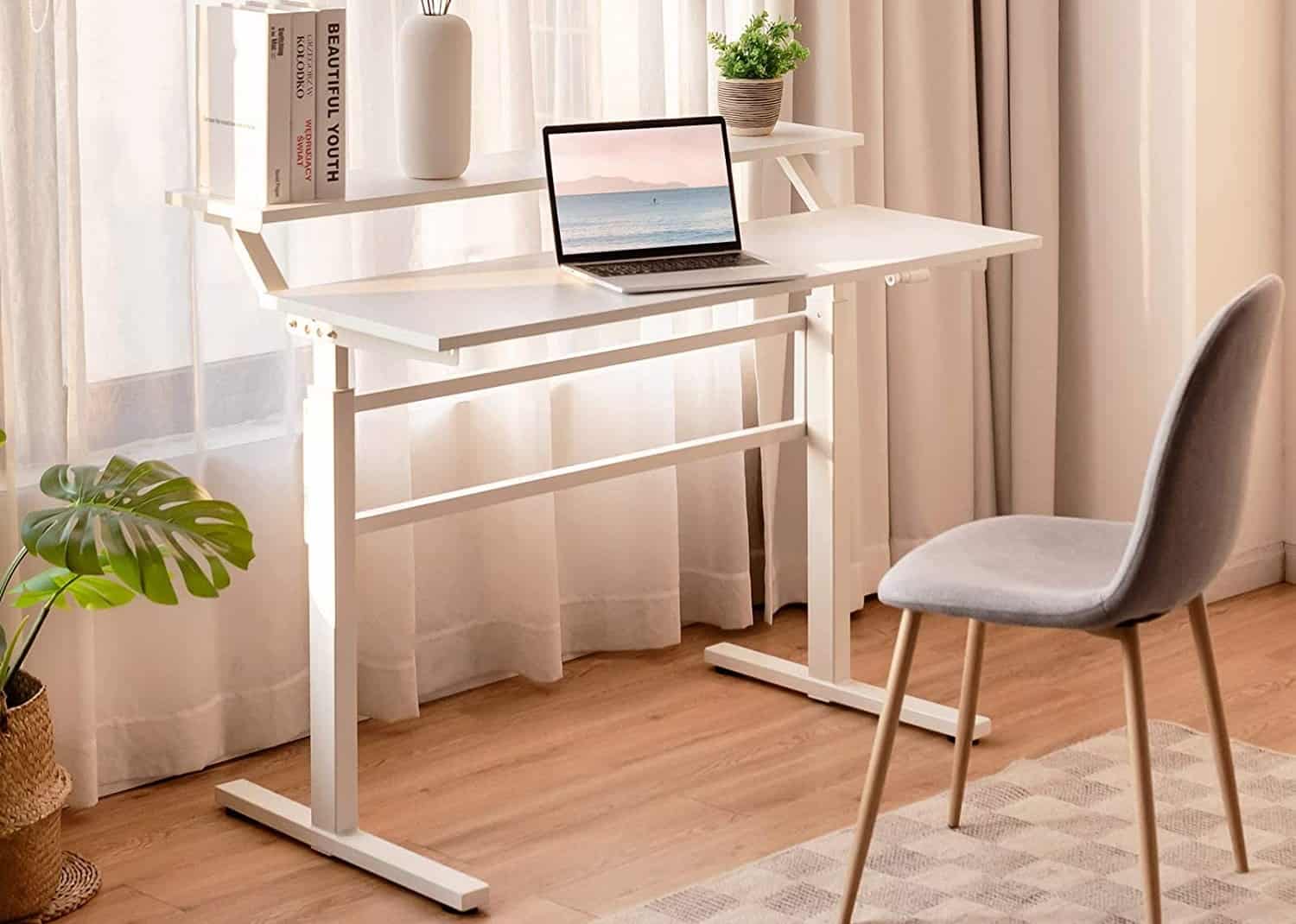
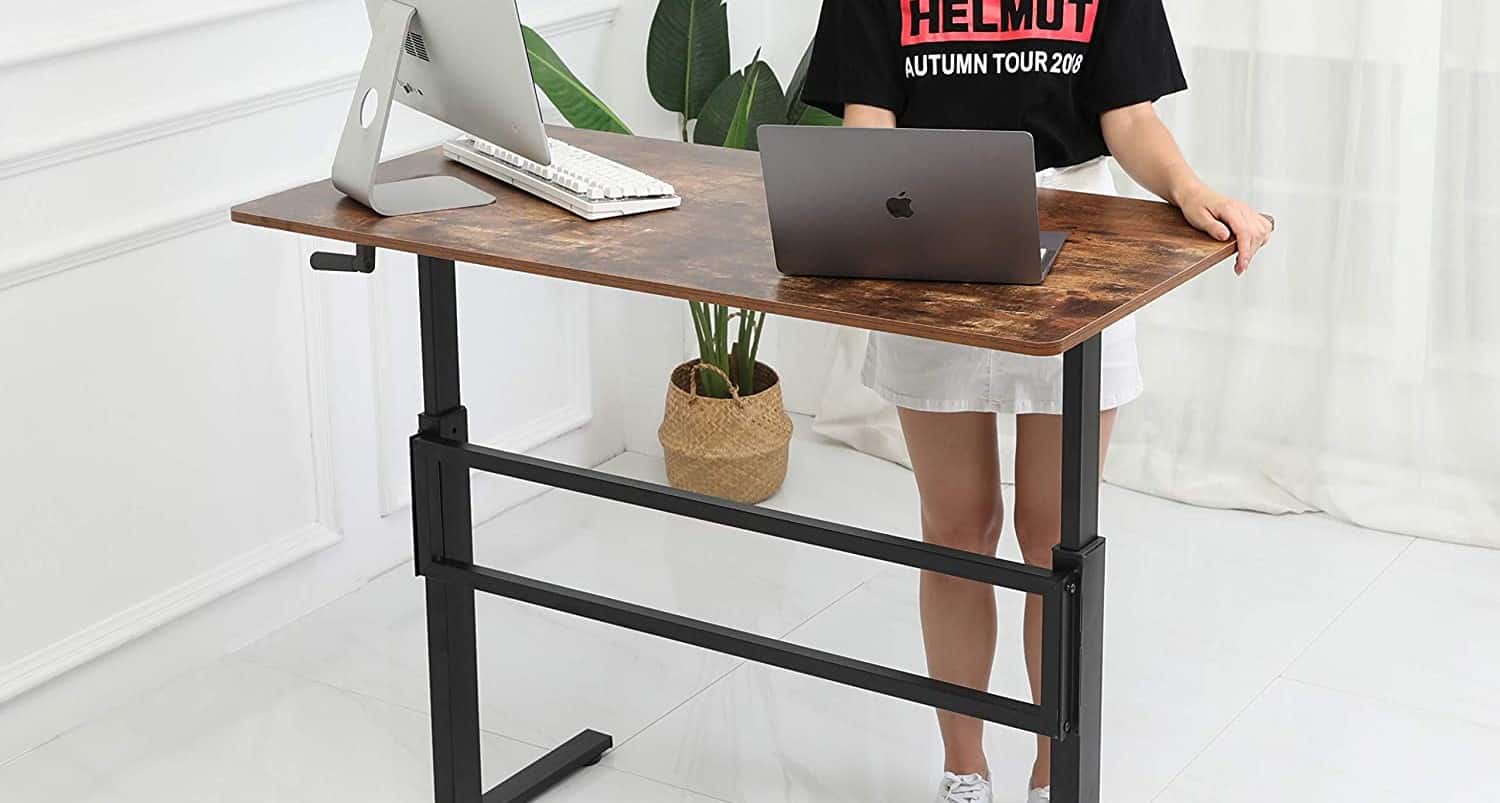
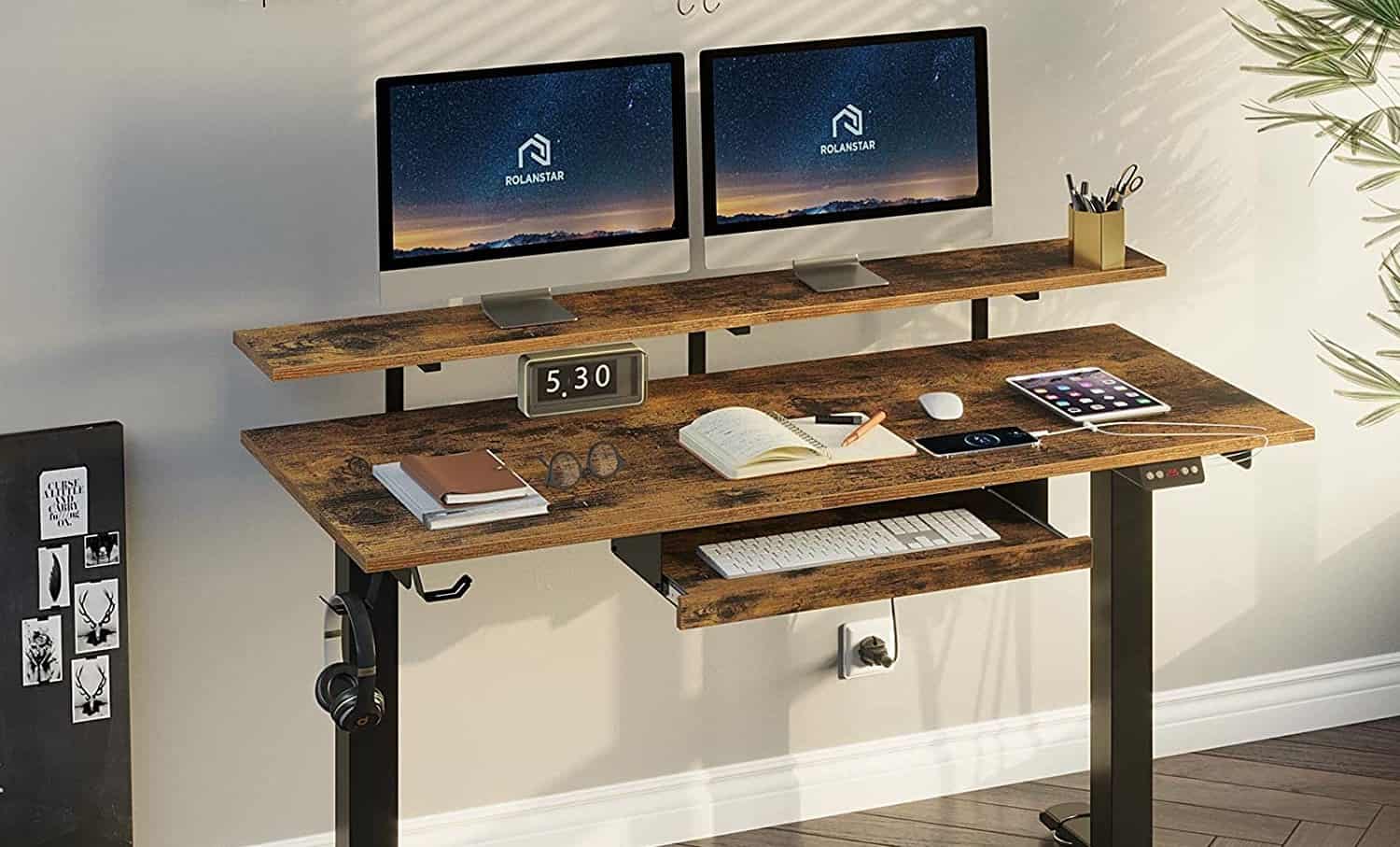
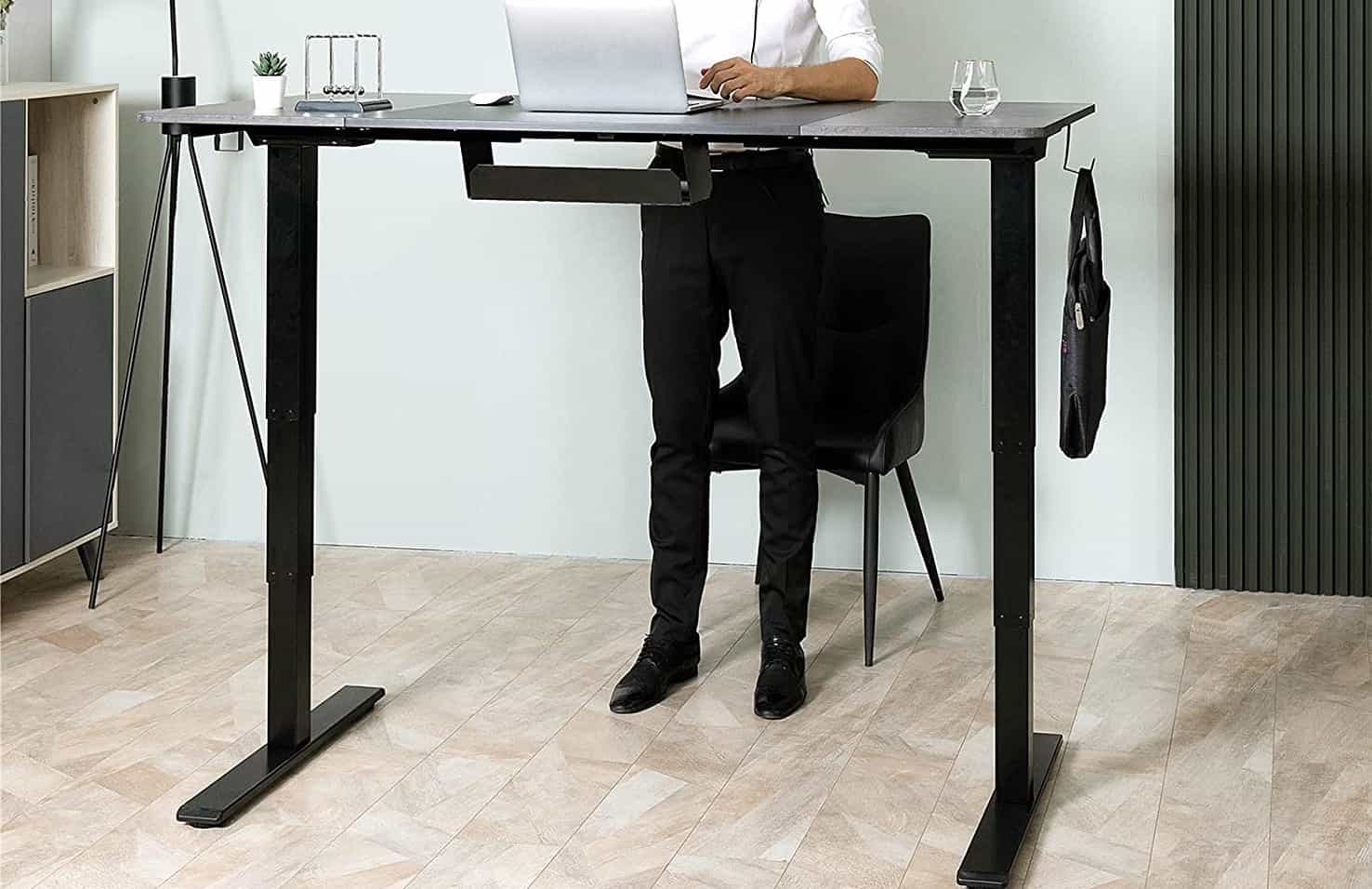



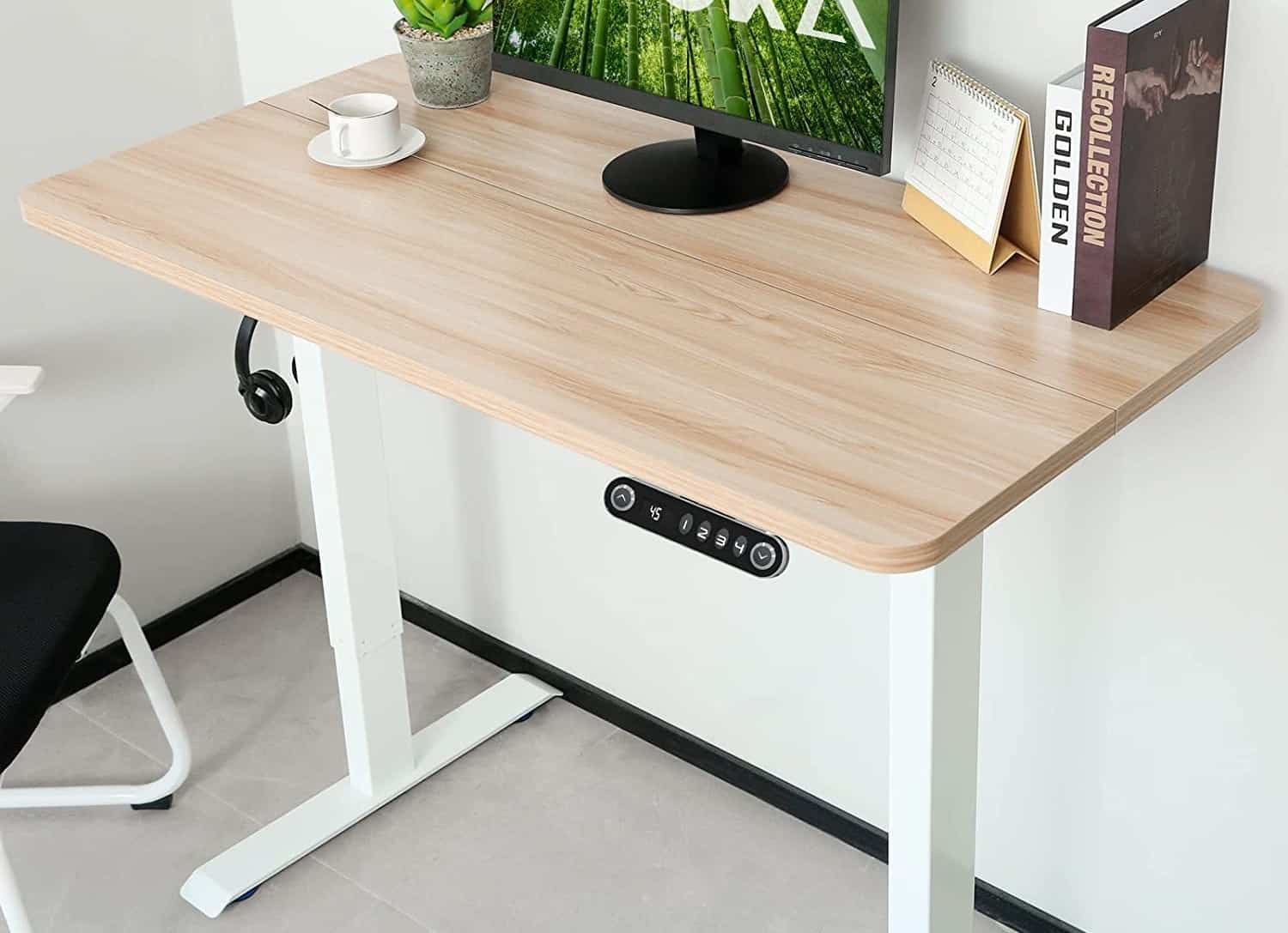
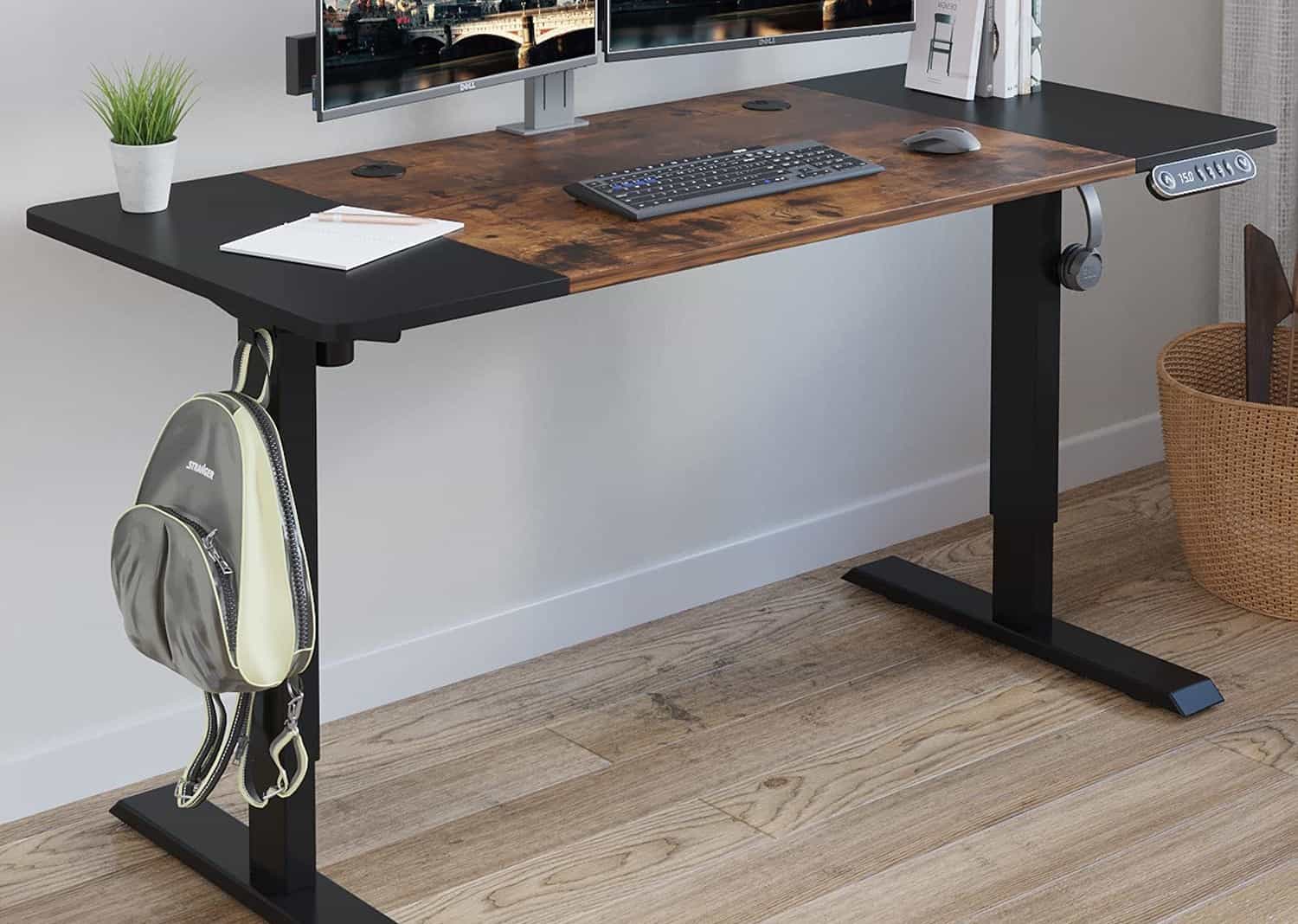
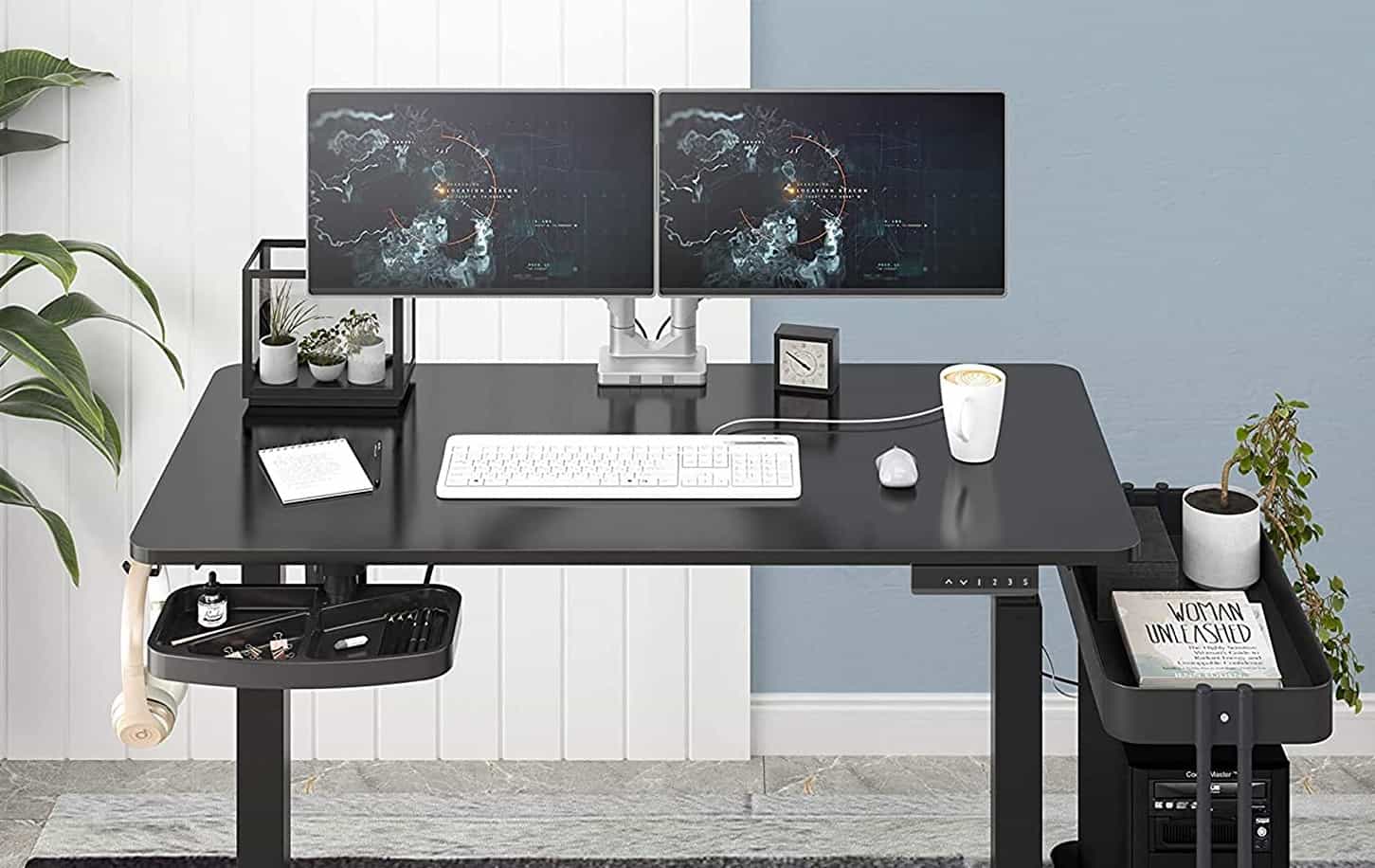
![Best Standing Desks for Gamers in [year] 27 Best Standing Desks for Gamers in 2026](https://www.gadgetreview.dev/wp-content/uploads/best-standing-desks-for-gamers-image.jpg)
![Best Uplift Standing Desks in [year] 28 Best Uplift Standing Desks in 2026](https://www.gadgetreview.dev/wp-content/uploads/best-uplift-standing-desks-image.jpg)
![Best Autonomous Standing Desks in [year] 29 Best Autonomous Standing Desks in 2026](https://www.gadgetreview.dev/wp-content/uploads/best-autonomous-standing-desks-image.jpg)
![Best Jarvis Standing Desks in [year] 30 Best Jarvis Standing Desks in 2026](https://www.gadgetreview.dev/wp-content/uploads/best-jarvis-standing-desks-image.jpg)
![Best Ergotron Standing Desks in [year] 31 Best Ergotron Standing Desks in 2026](https://www.gadgetreview.dev/wp-content/uploads/best-ergotron-standing-desks-image.jpg)
![Best Standing Desk Bikes in [year] 32 Best Standing Desk Bikes in 2026](https://www.gadgetreview.dev/wp-content/uploads/best-standing-desk-bikes-image.jpg)
![Best VariDesk Standing Desks in [year] 33 Best VariDesk Standing Desks in 2026](https://www.gadgetreview.dev/wp-content/uploads/best-varidesk-standing-desks-image.jpg)
![Best Flexispot Standing Desks in [year] 34 Best Flexispot Standing Desks in 2026](https://www.gadgetreview.dev/wp-content/uploads/best-flexispot-standing-desks-image.jpg)
![Best Vivo Standing Desks in [year] 35 Best Vivo Standing Desks in 2026](https://www.gadgetreview.dev/wp-content/uploads/best-vivo-standing-desks-imsge.jpg)
![Best Walking Treadmill Standing Desks in [year] 36 Best Walking Treadmill Standing Desks in 2026](https://www.gadgetreview.dev/wp-content/uploads/best-walking-treadmill-standing-desks-image.jpg)
![Best Fezibo Standing Desks in [year] 37 Best Fezibo Standing Desks in 2026](https://www.gadgetreview.dev/wp-content/uploads/best-fezibo-standing-desks-image.jpg)
![Best Standing Desk in [year] ([month] Reviews) 38 Best Standing Desk in 2026 (January Reviews)](https://www.gadgetreview.dev/wp-content/uploads/best-standing-desks-image-scaled.jpg)

![4 Best Robotic Window Cleaners in [year] 40 4 Best Robotic Window Cleaners in 2026](https://www.gadgetreview.dev/wp-content/uploads/best-robotic-window-cleaners.jpg)

![7 Best Stainless Steel Cleaners in [year] 42 7 Best Stainless Steel Cleaners in 2026](https://www.gadgetreview.dev/wp-content/uploads/best-stainless-steel-cleaner.png)
![7 Best Portable Closets in [year] 43 7 Best Portable Closets in 2026](https://www.gadgetreview.dev/wp-content/uploads/best-portable-closet.jpg)

![7 Best Shipping and Postal Scales in [year] 45 7 Best Shipping and Postal Scales in 2026](https://www.gadgetreview.dev/wp-content/uploads/best-shipping-and-postal-scale.jpg)
![7 Best Clipboard for Work in [year] 46 7 Best Clipboard for Work in 2026](https://www.gadgetreview.dev/wp-content/uploads/best-clipboard-for-work.jpg)
